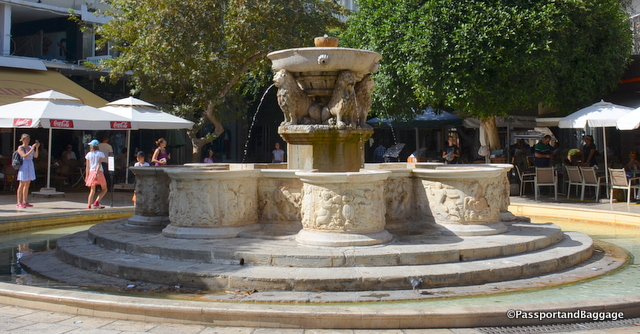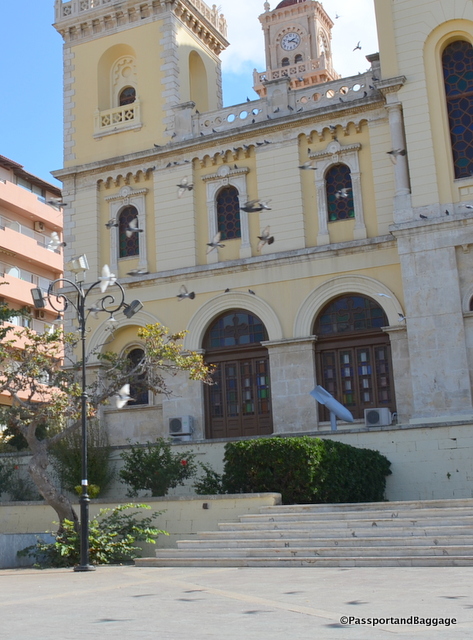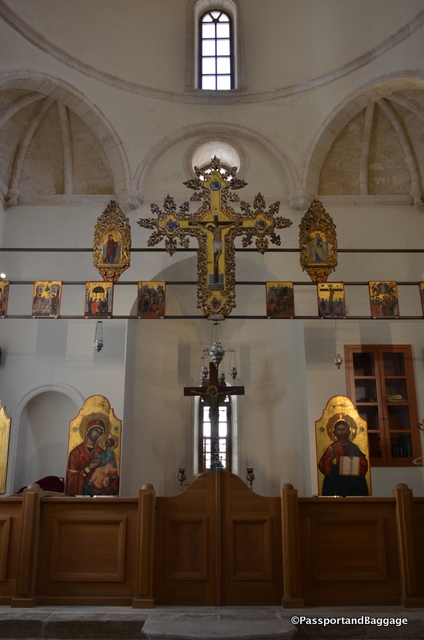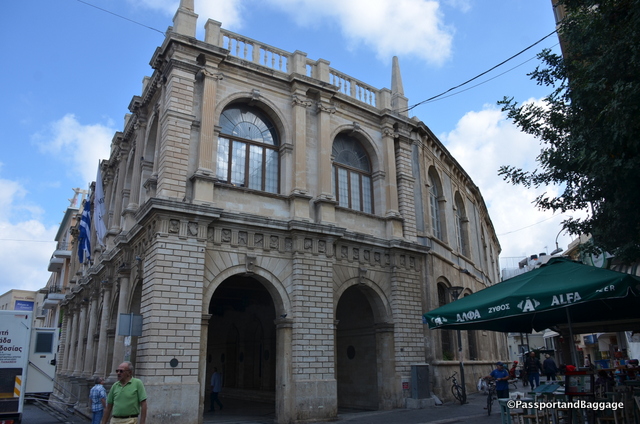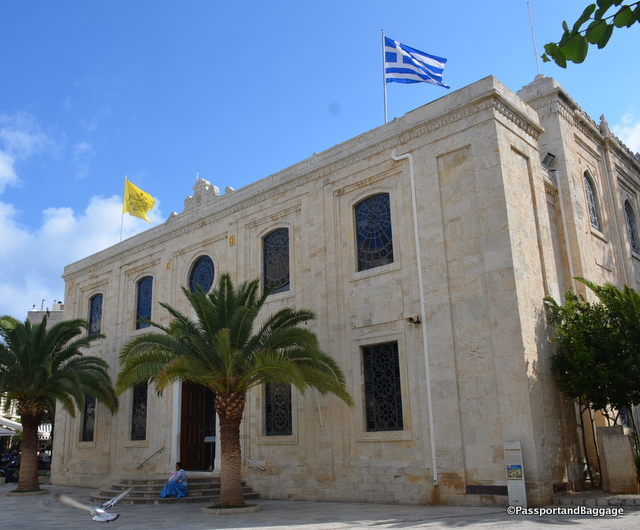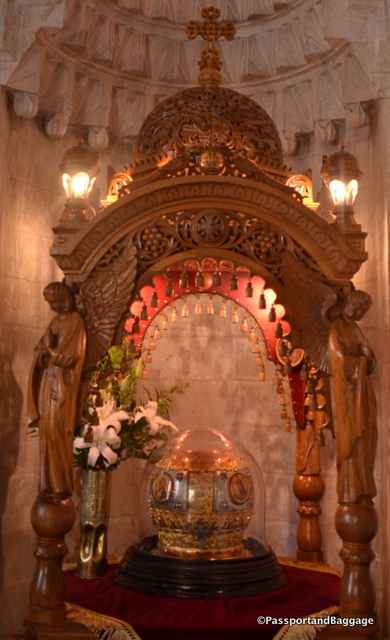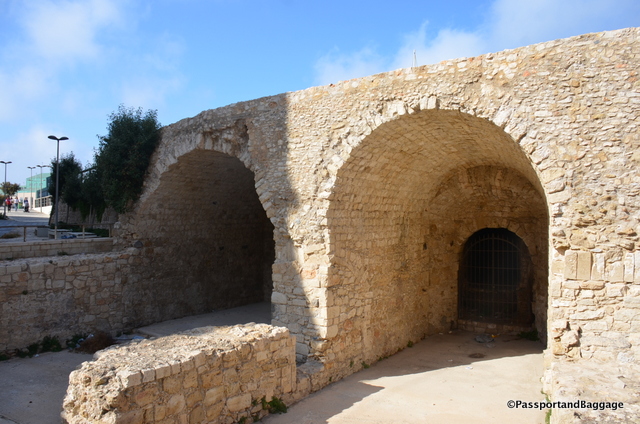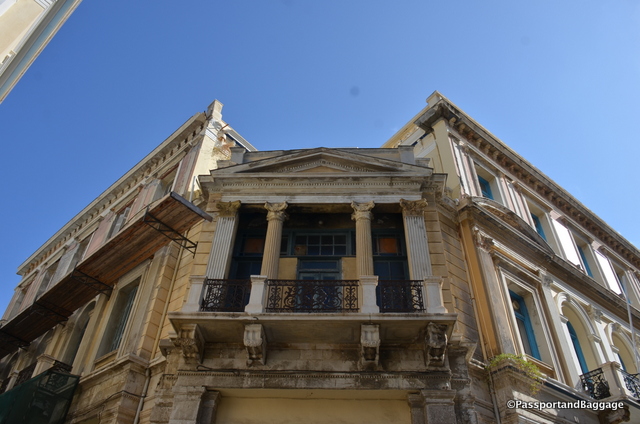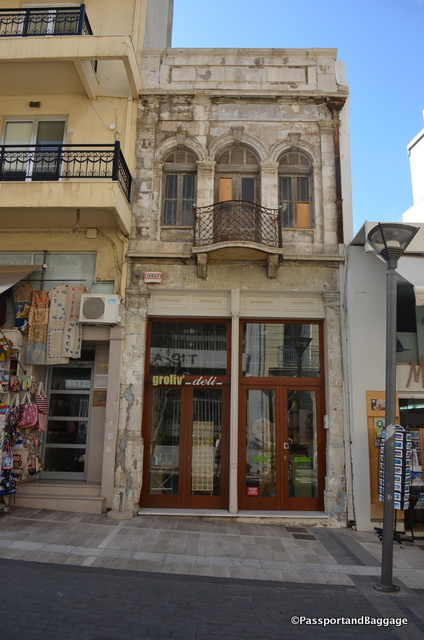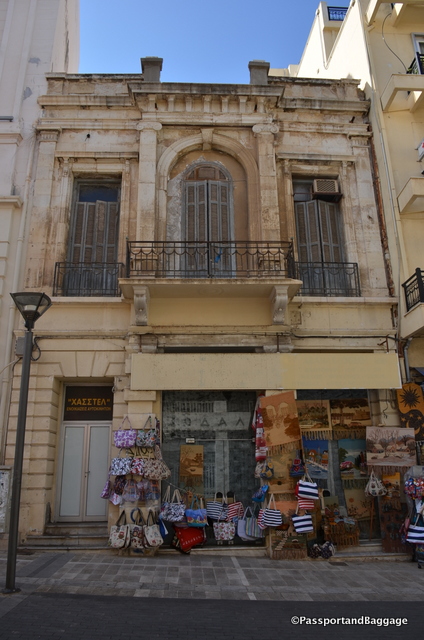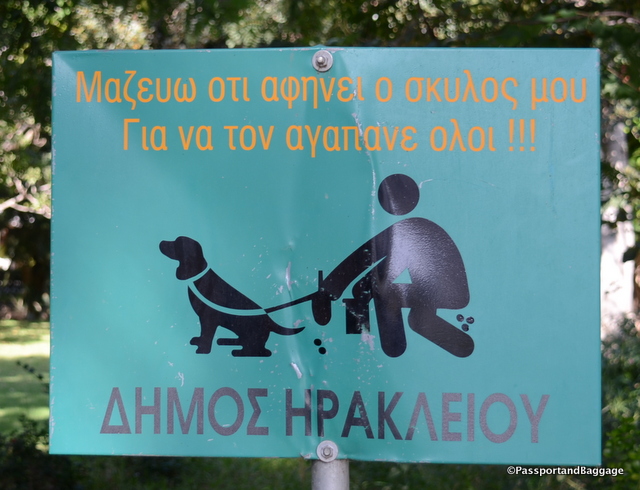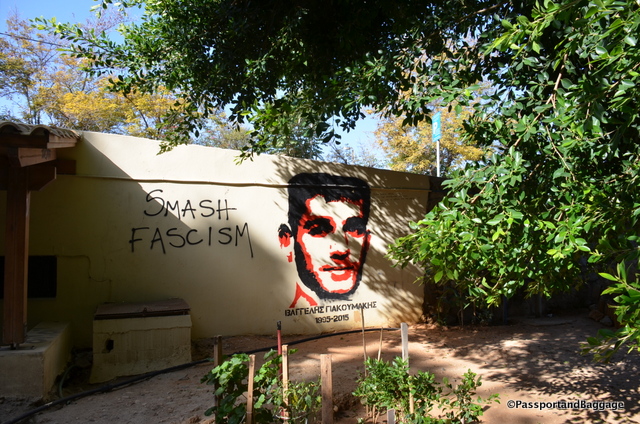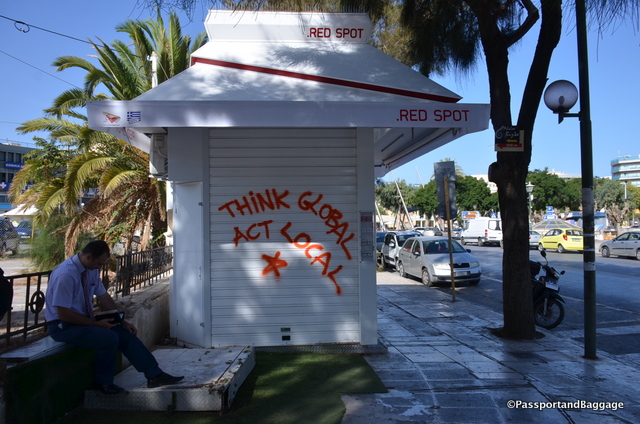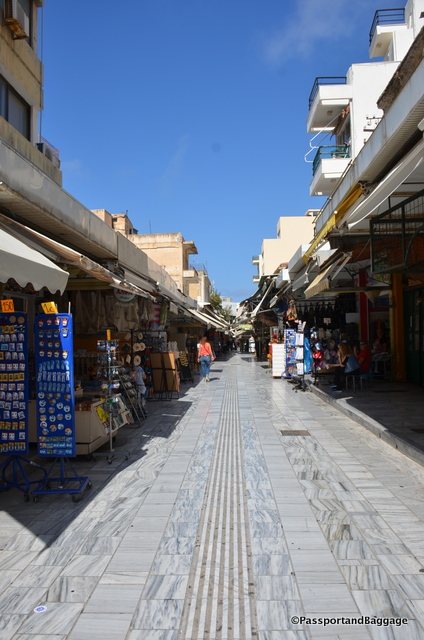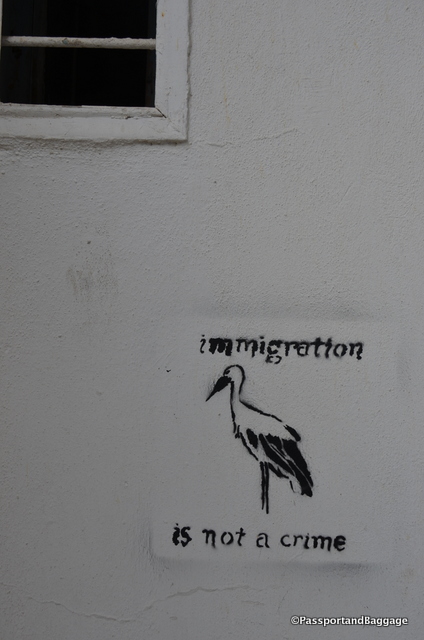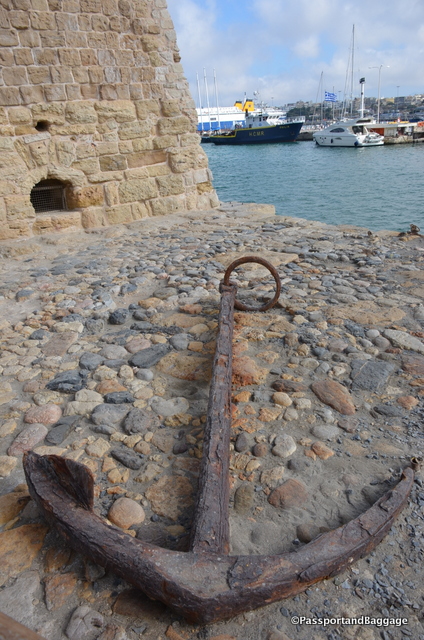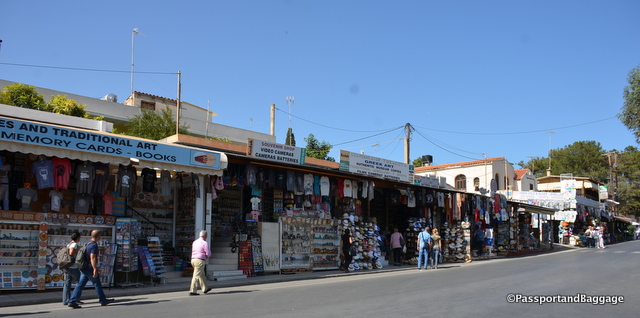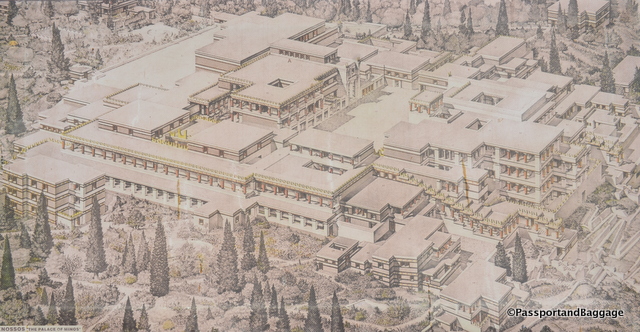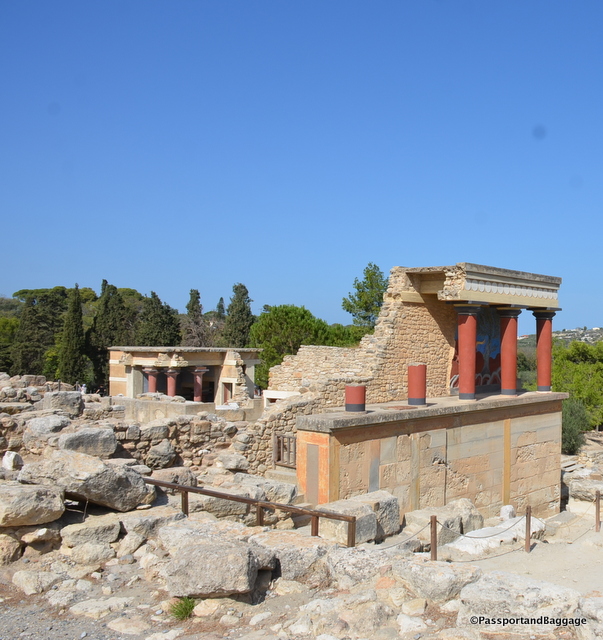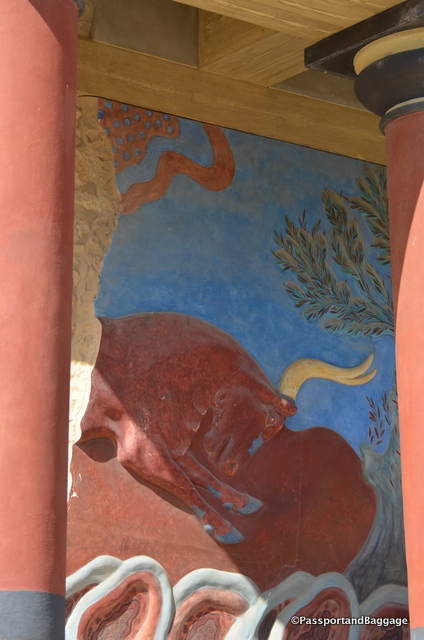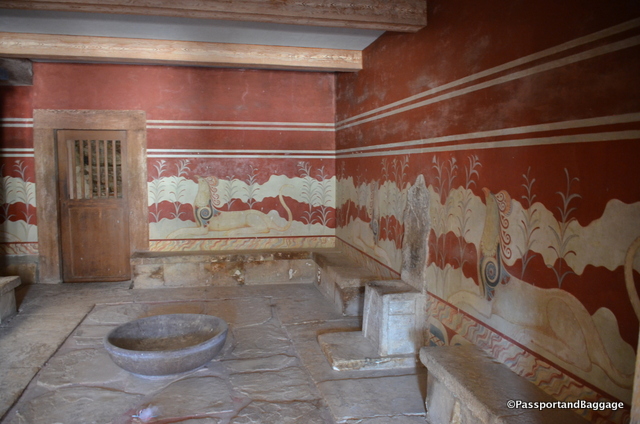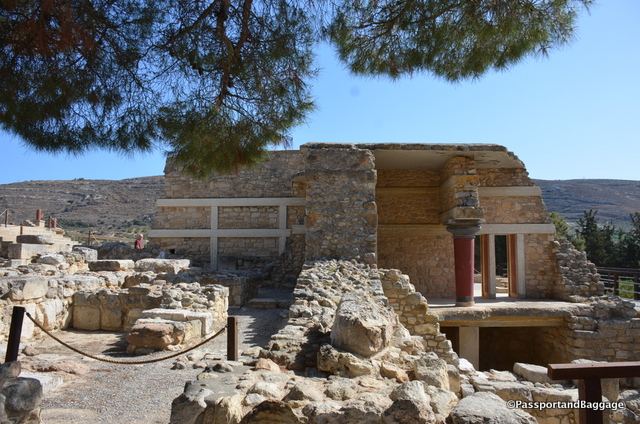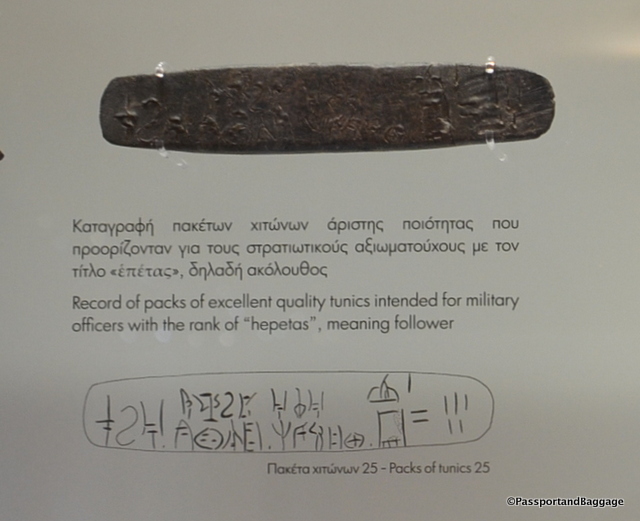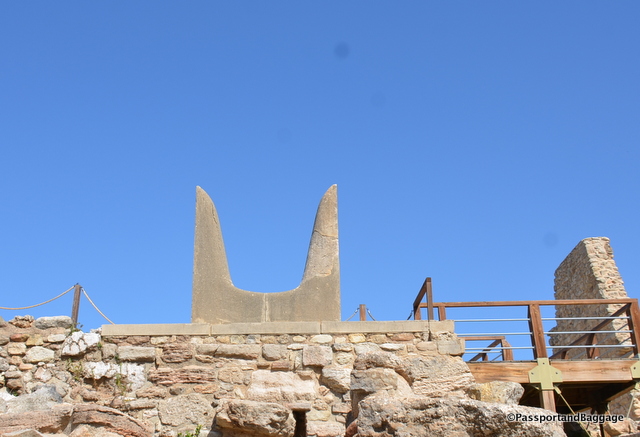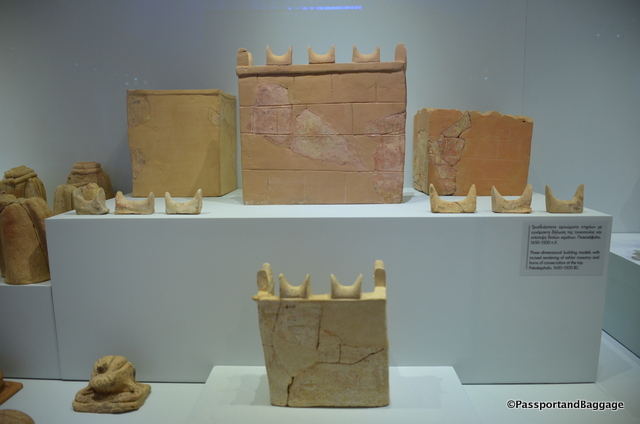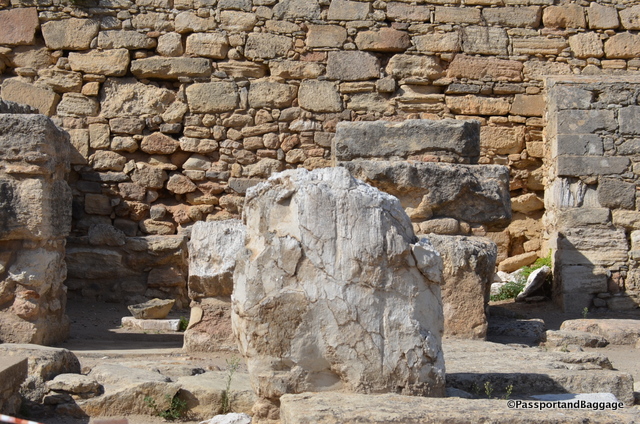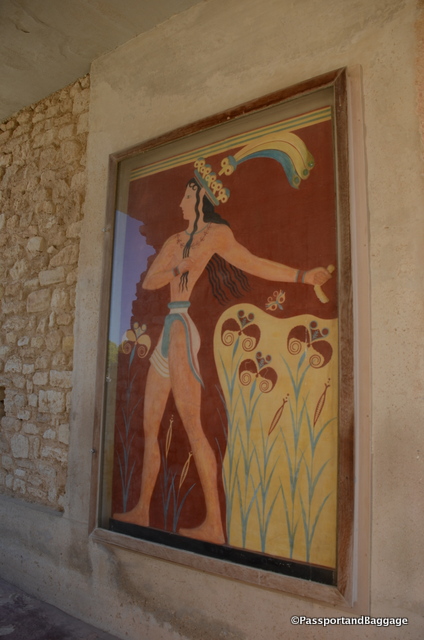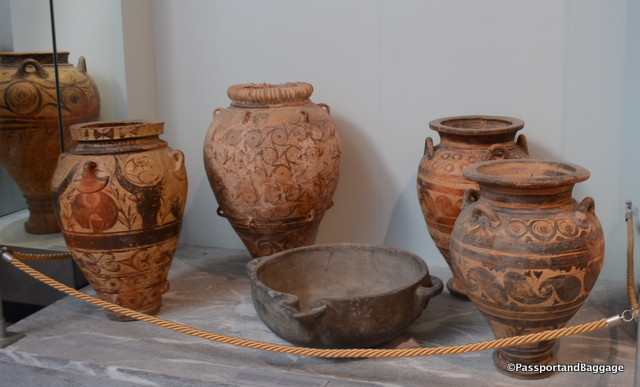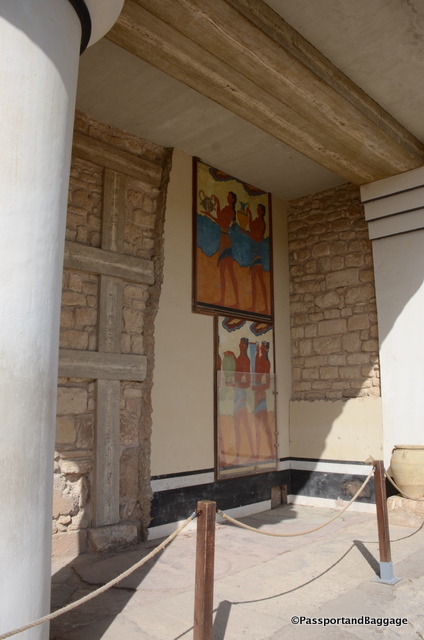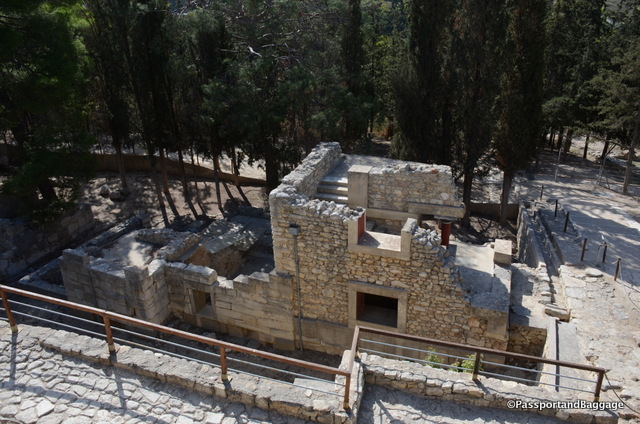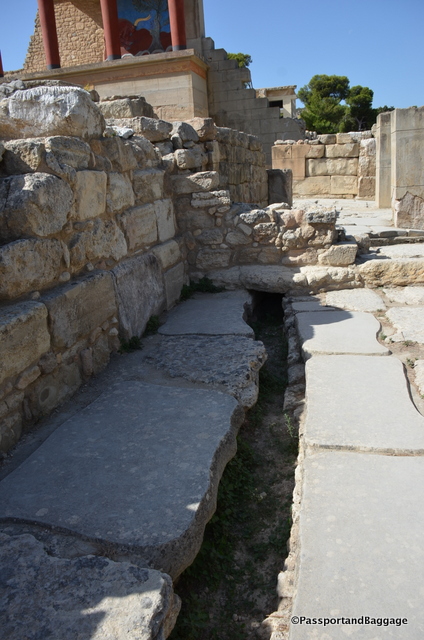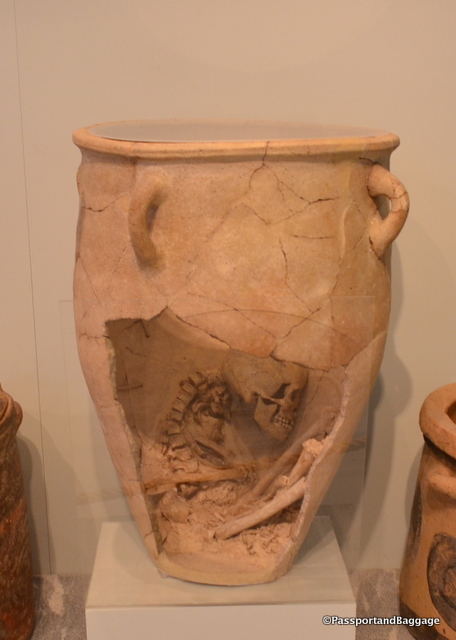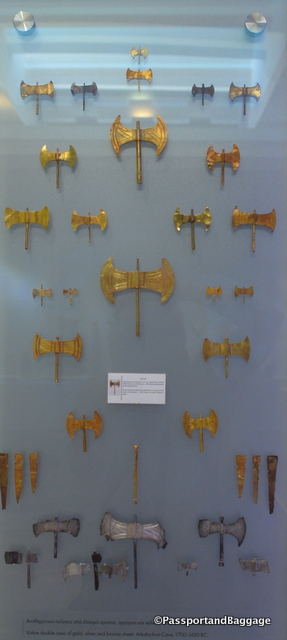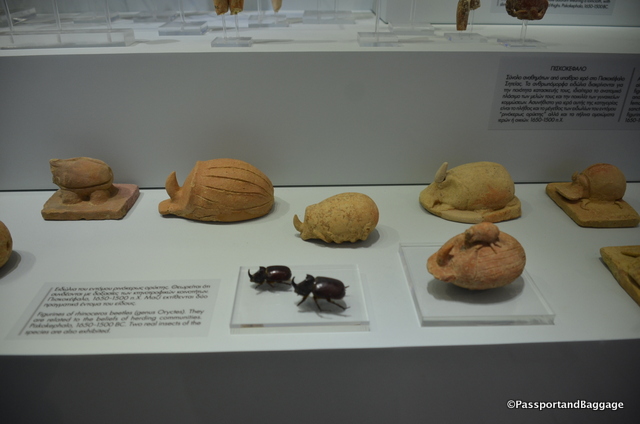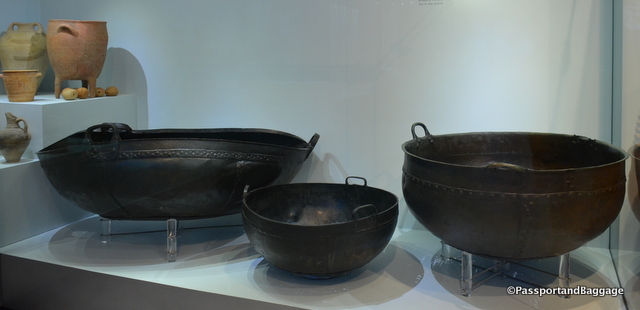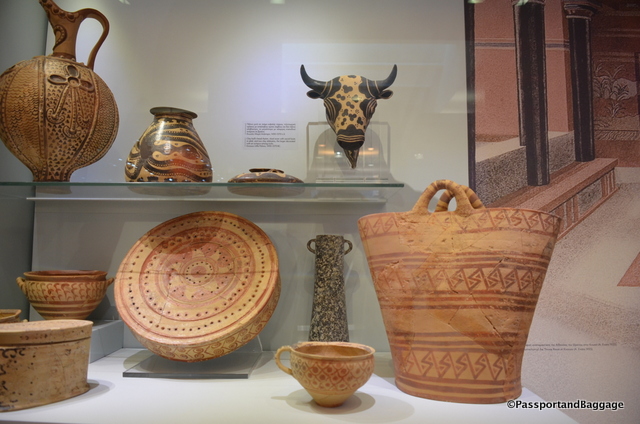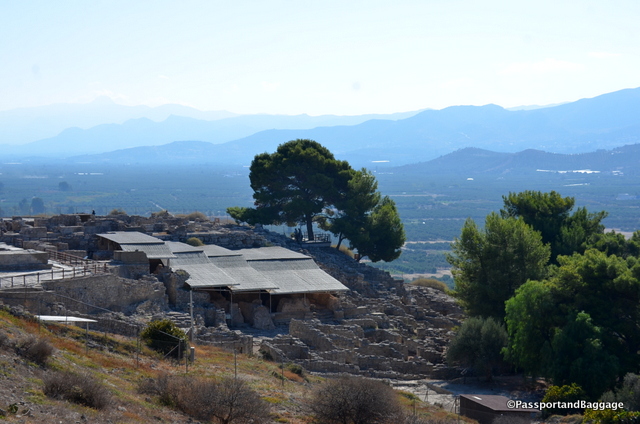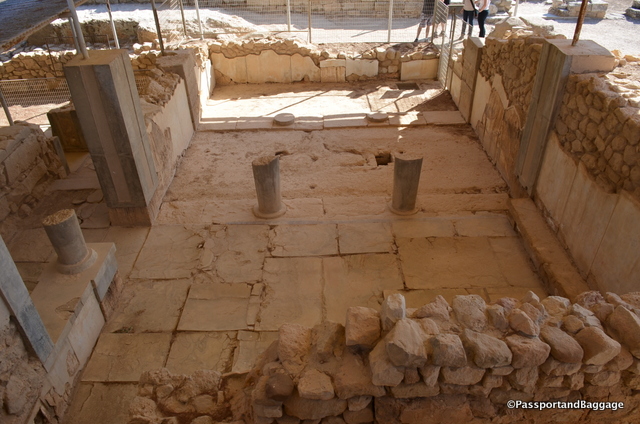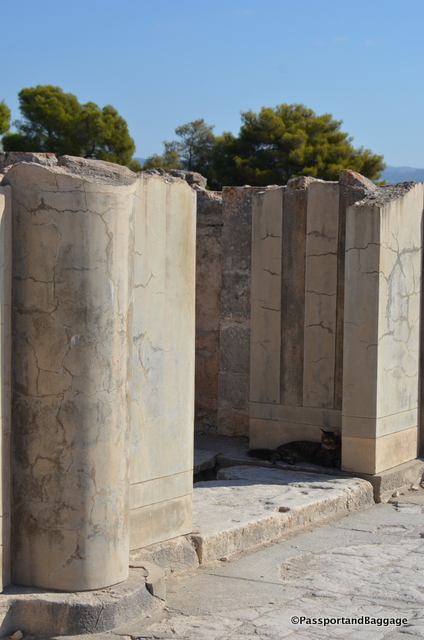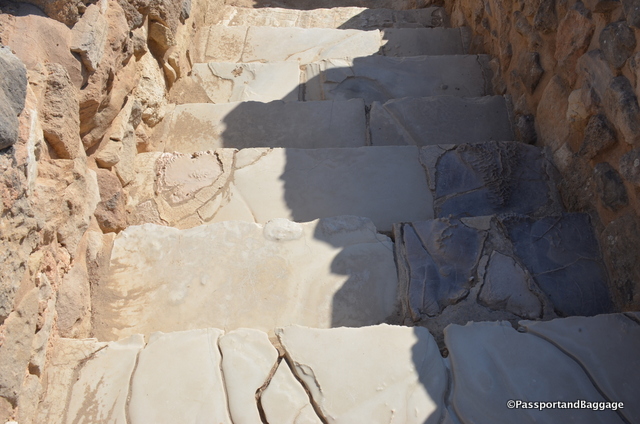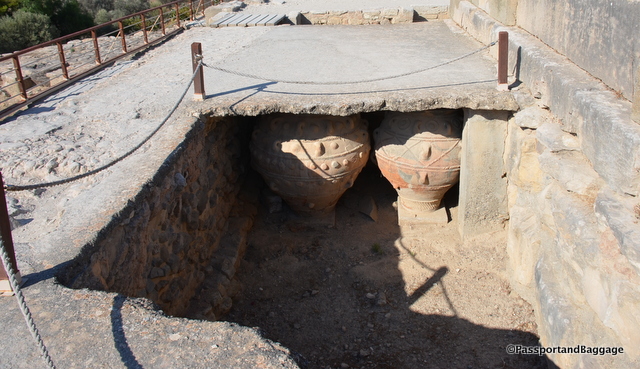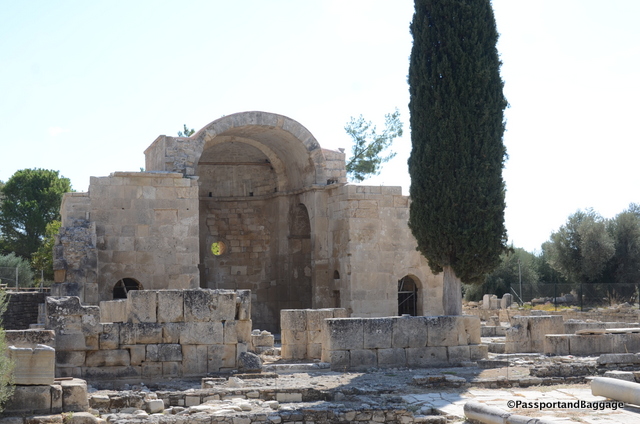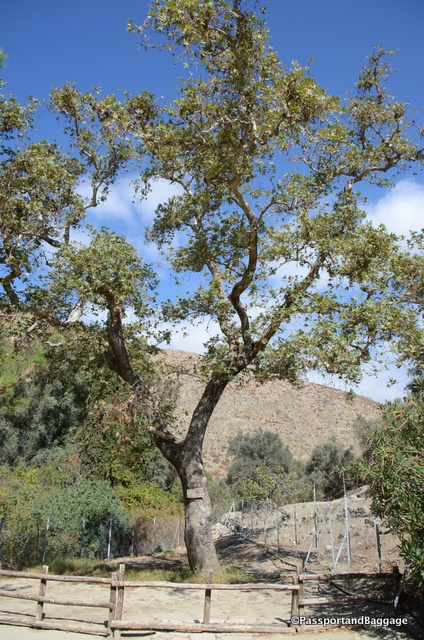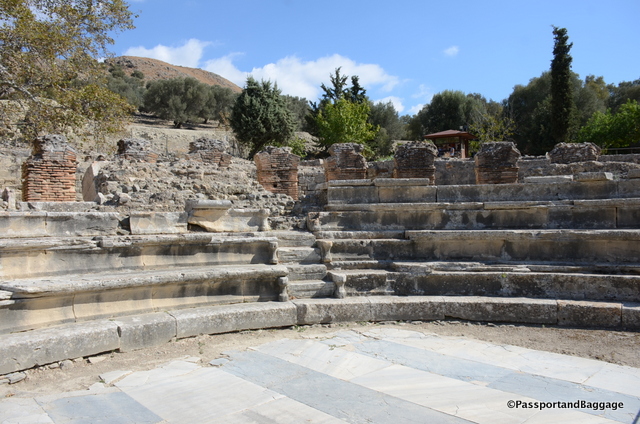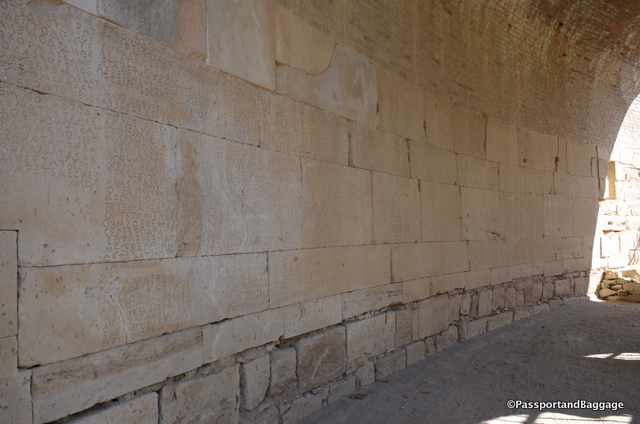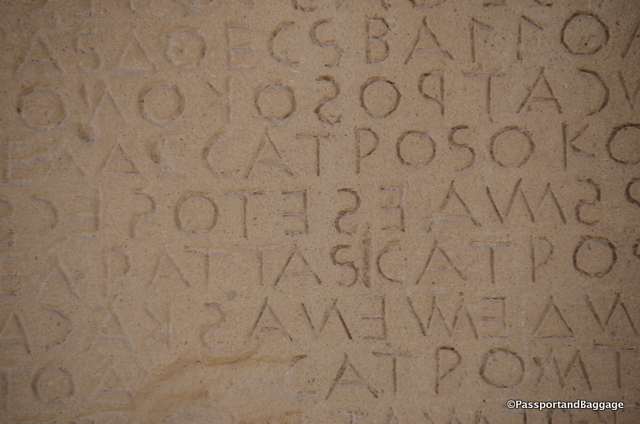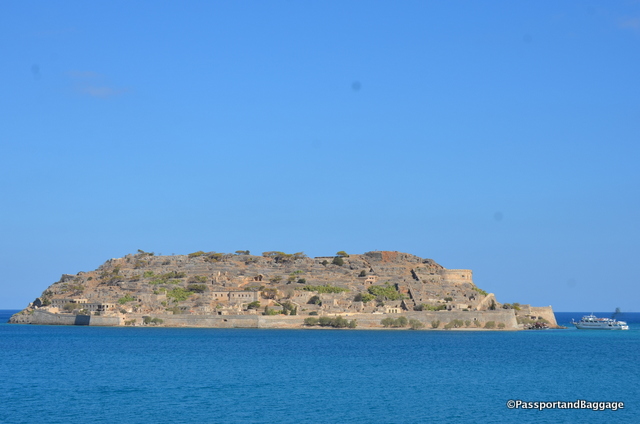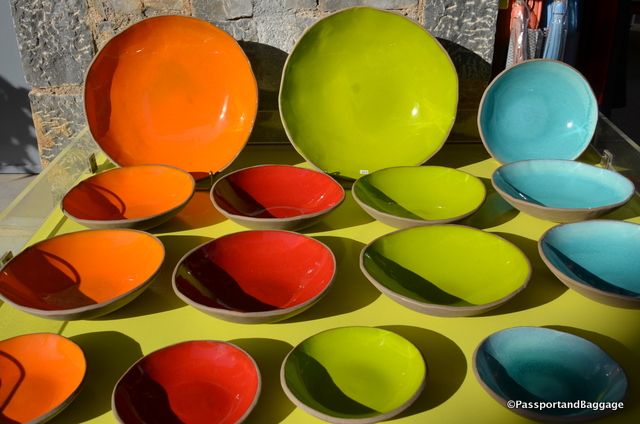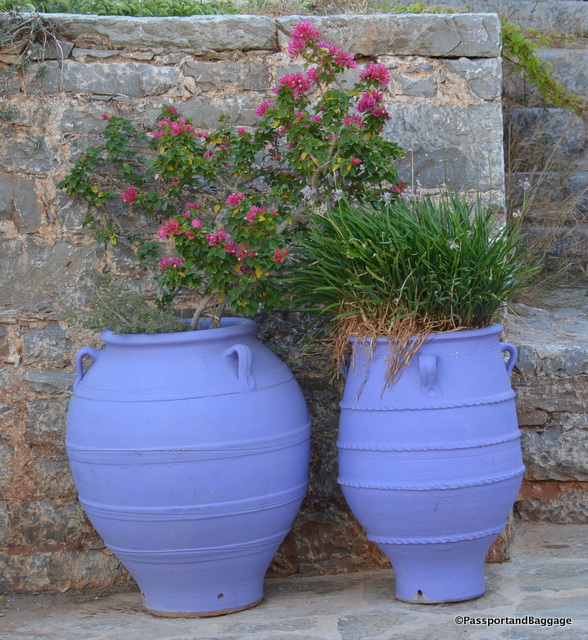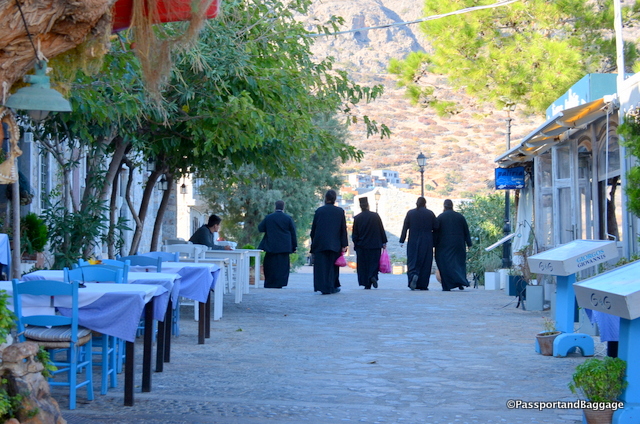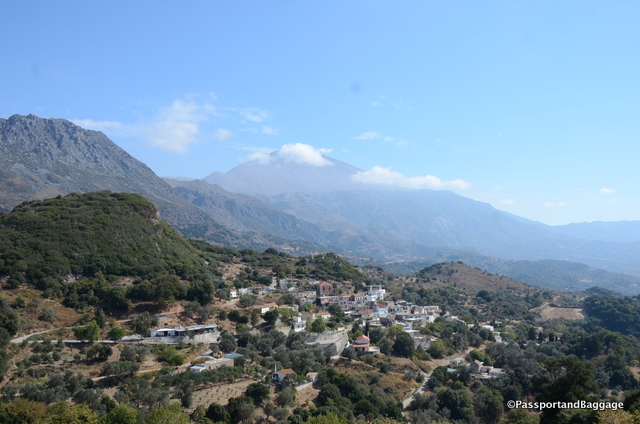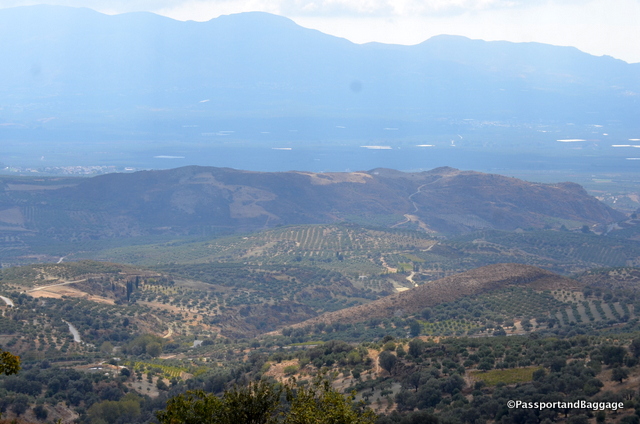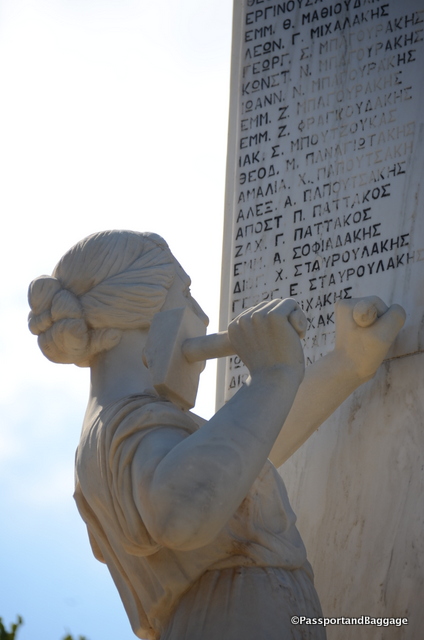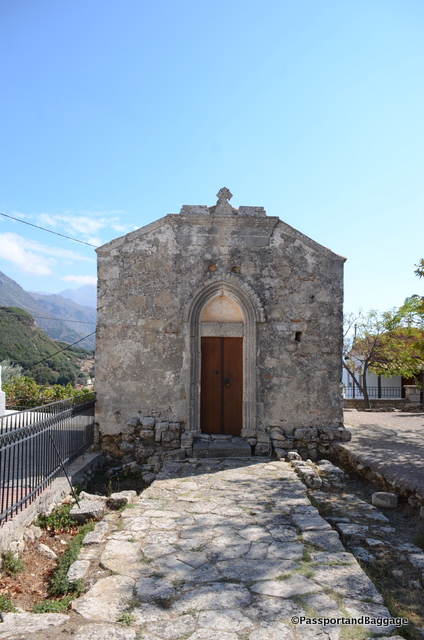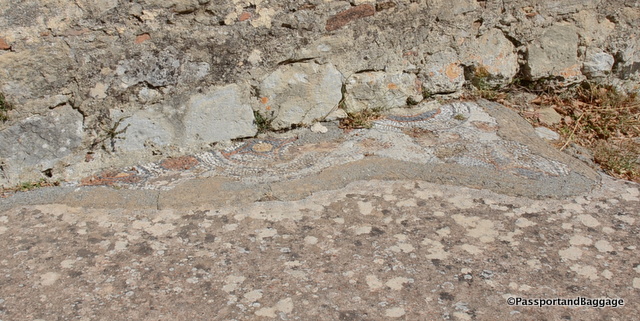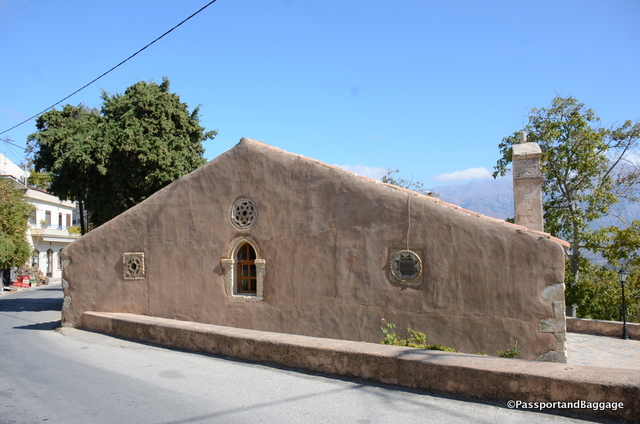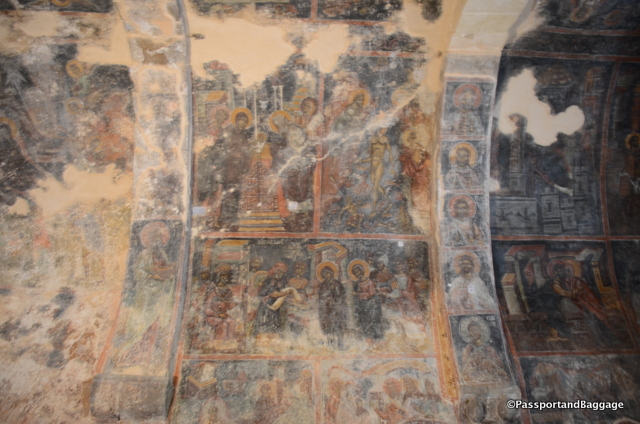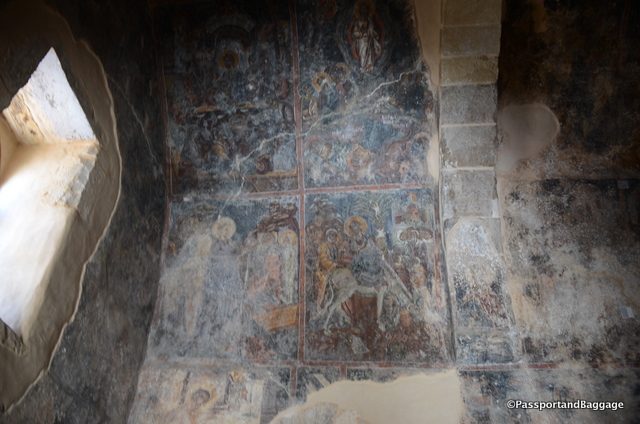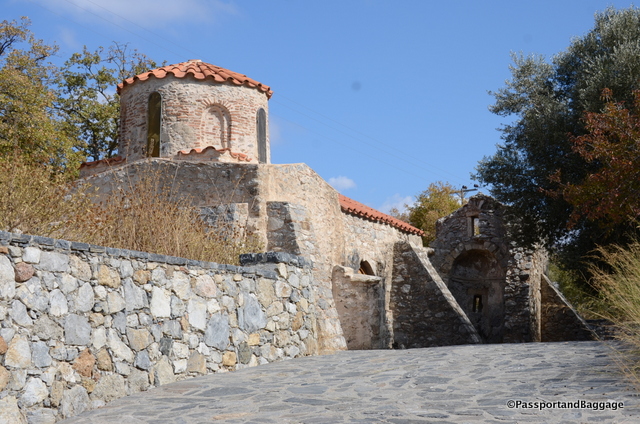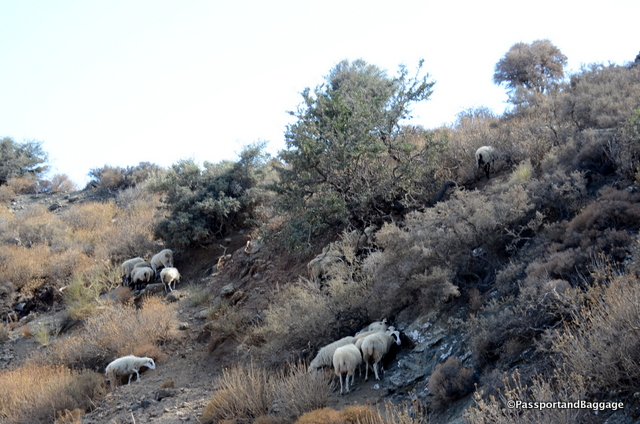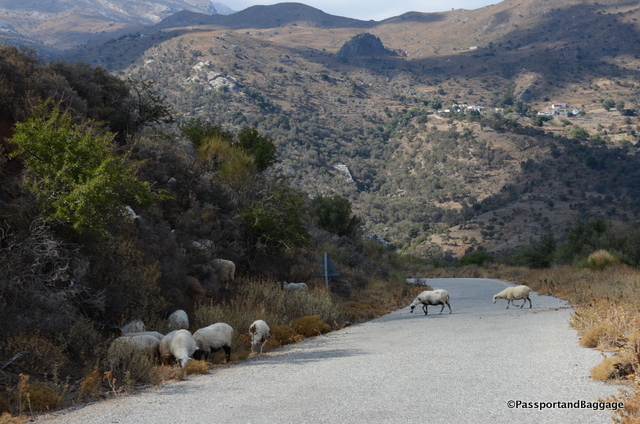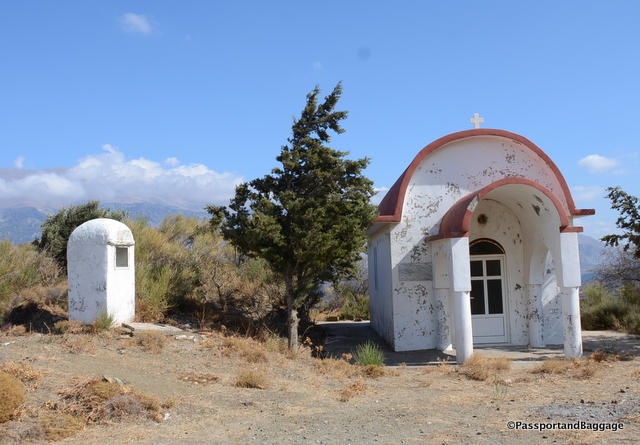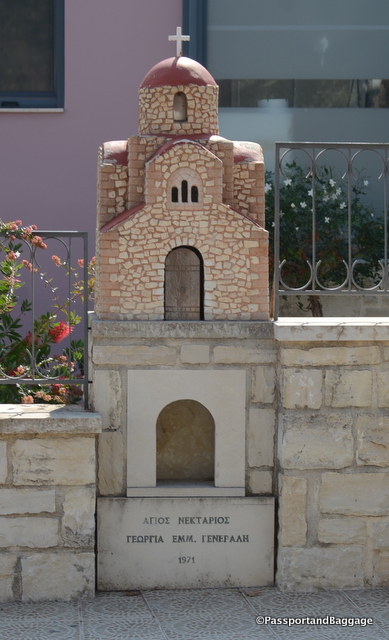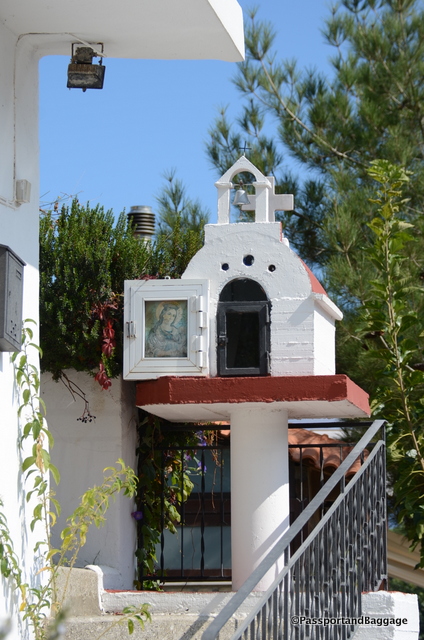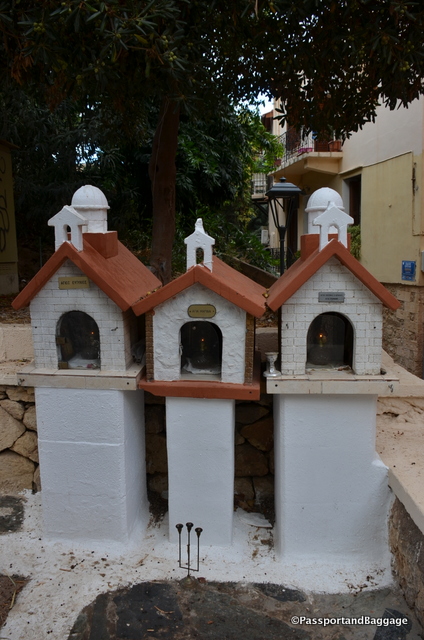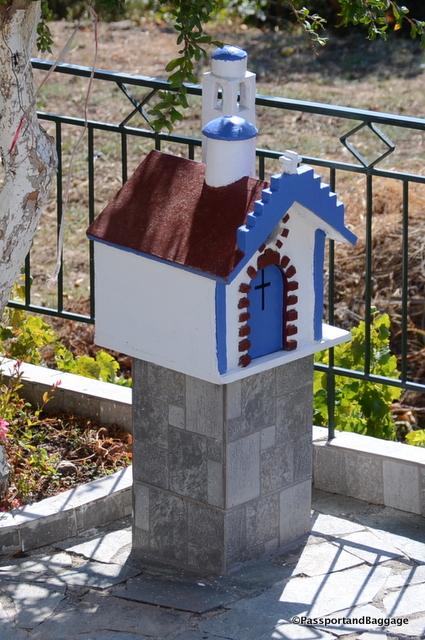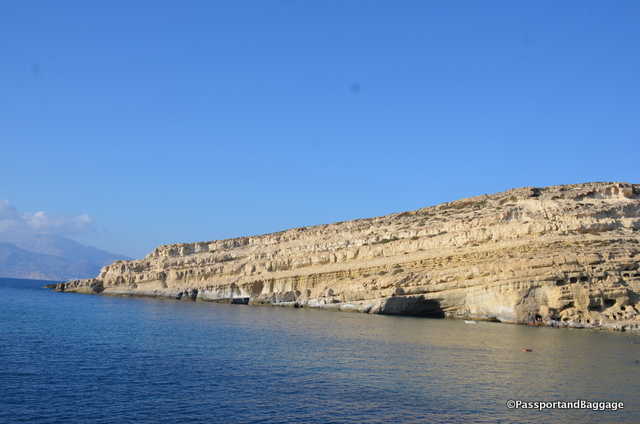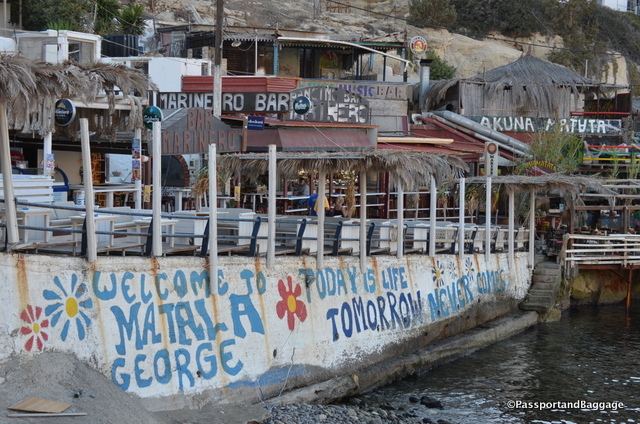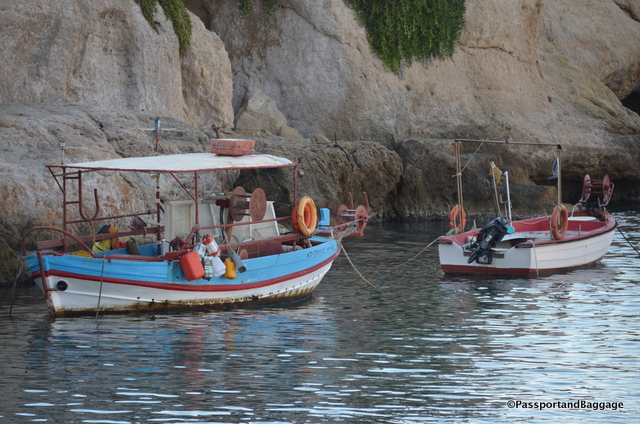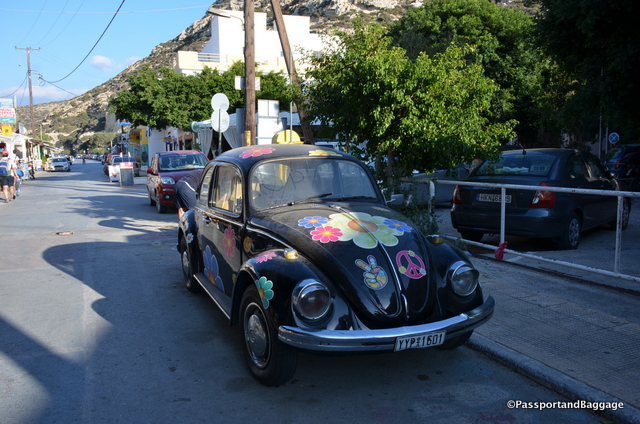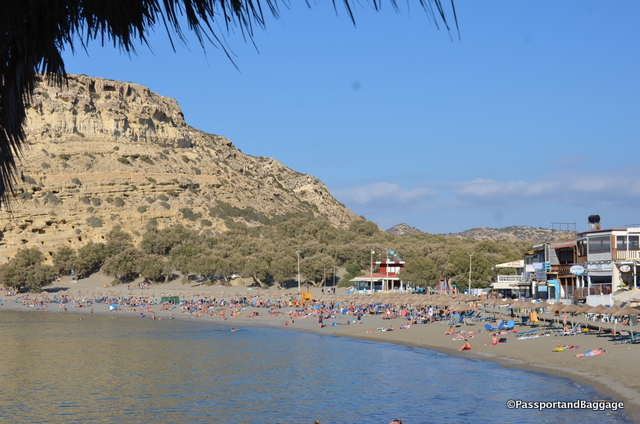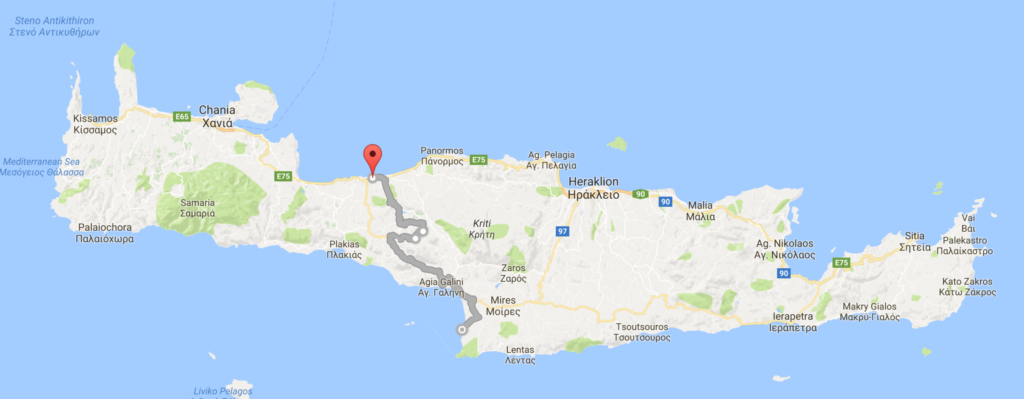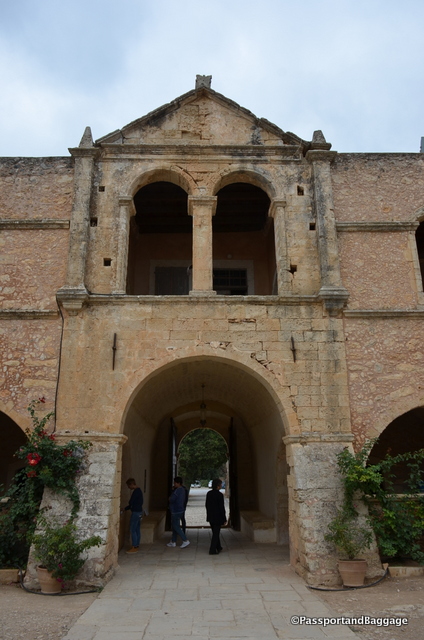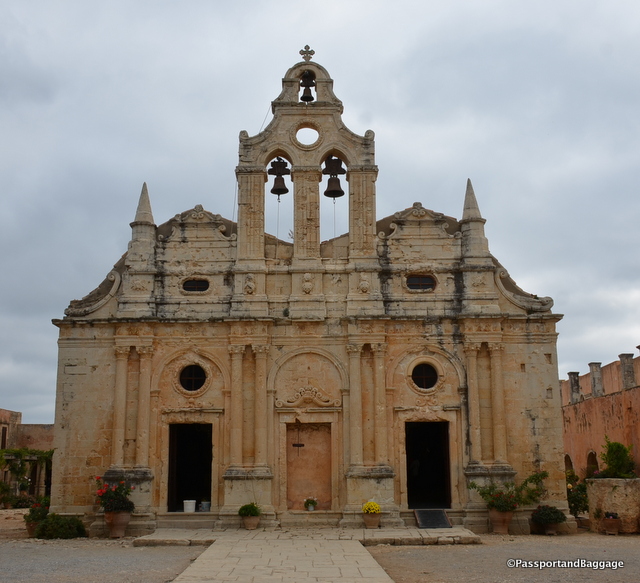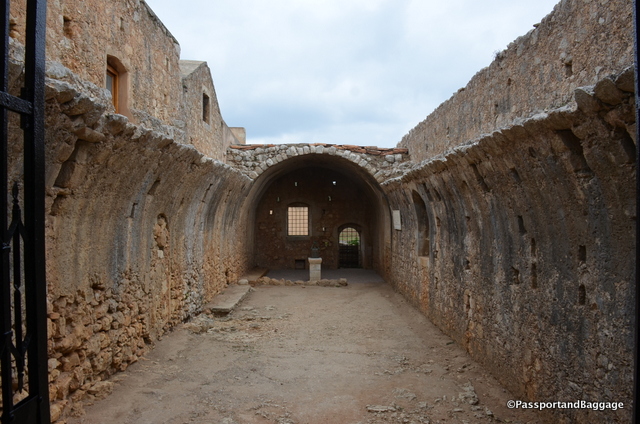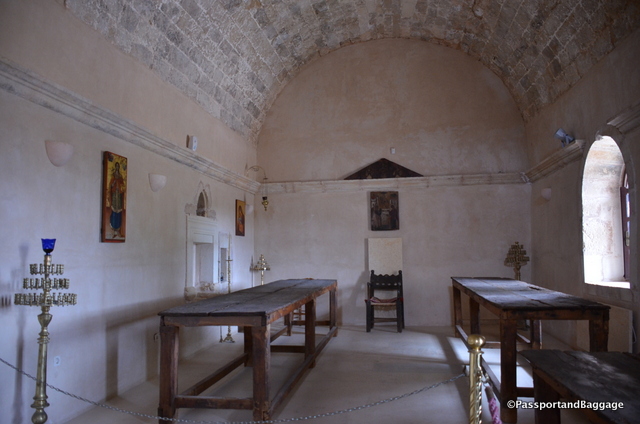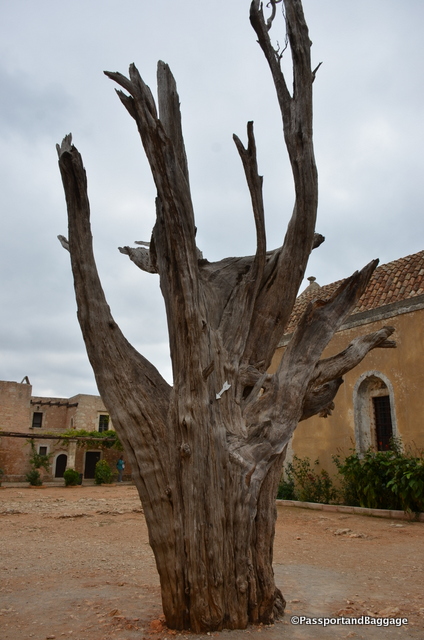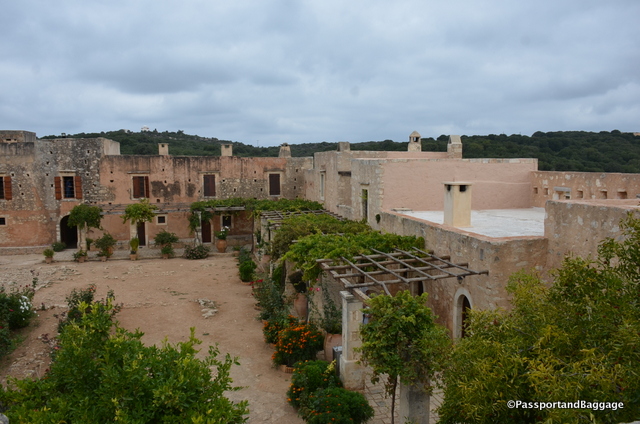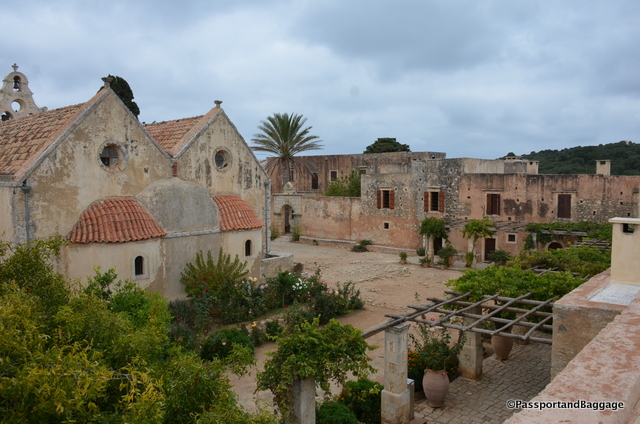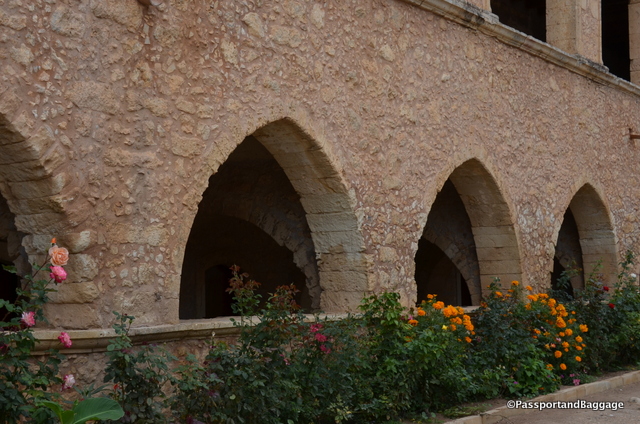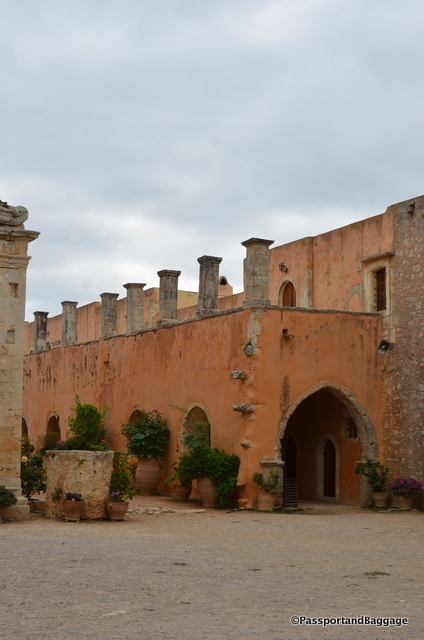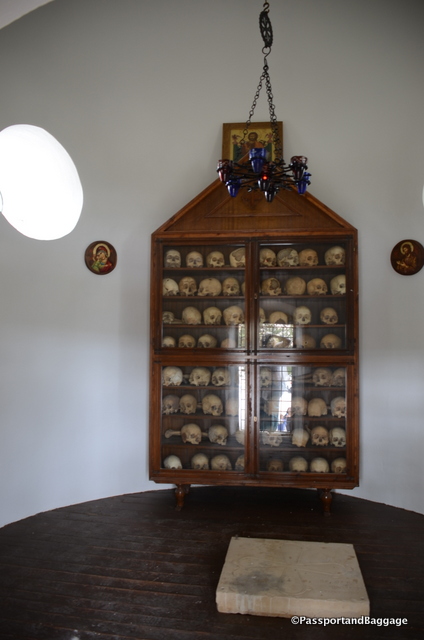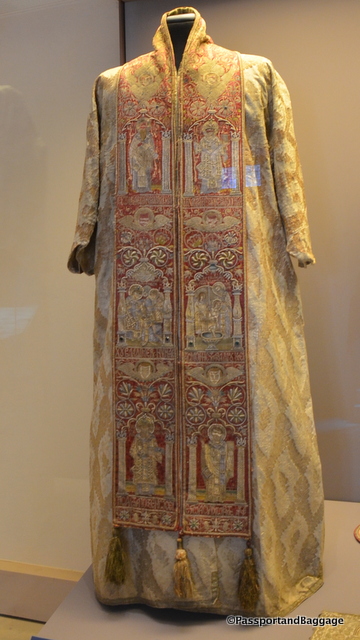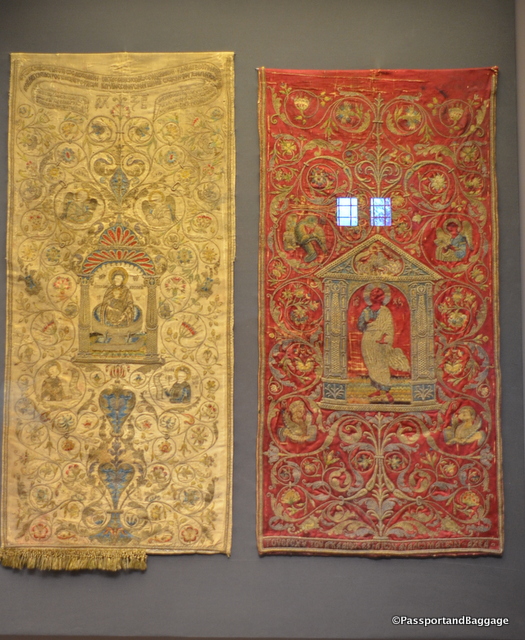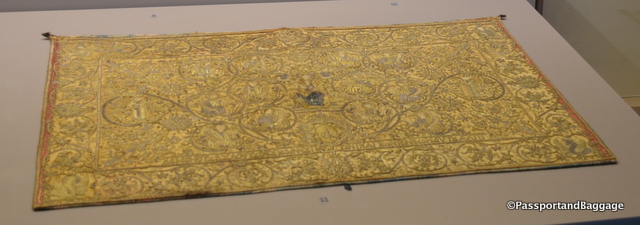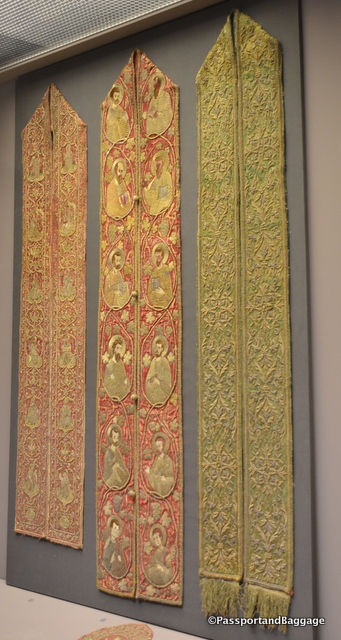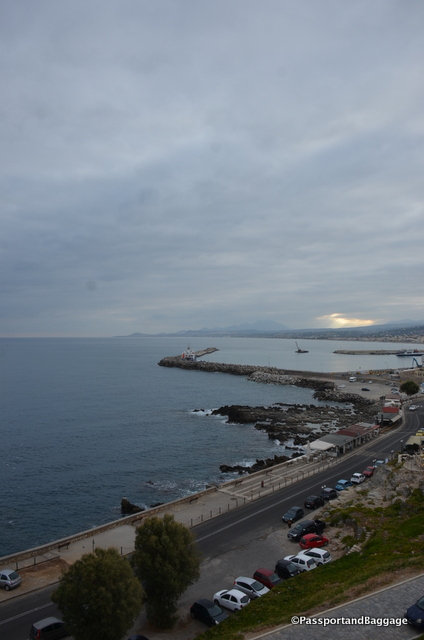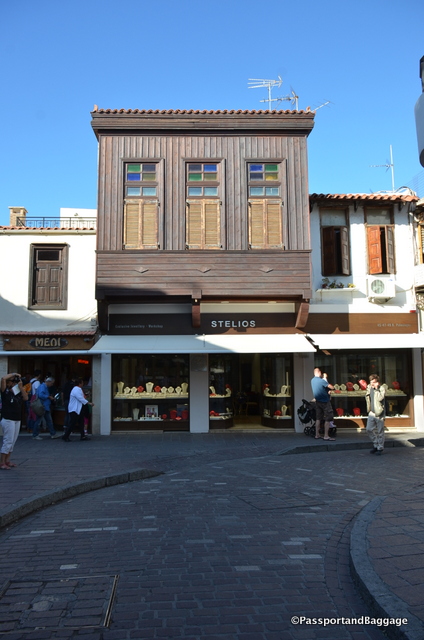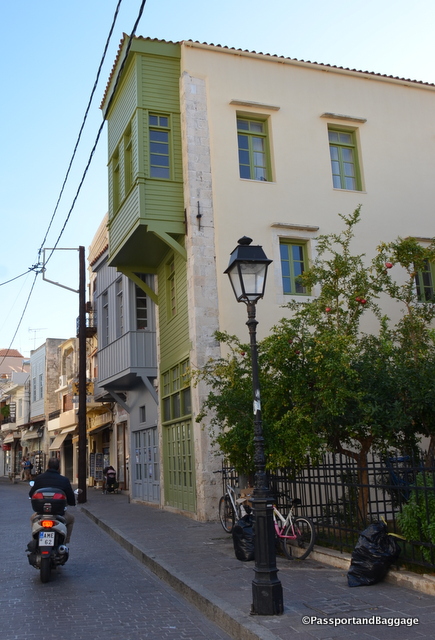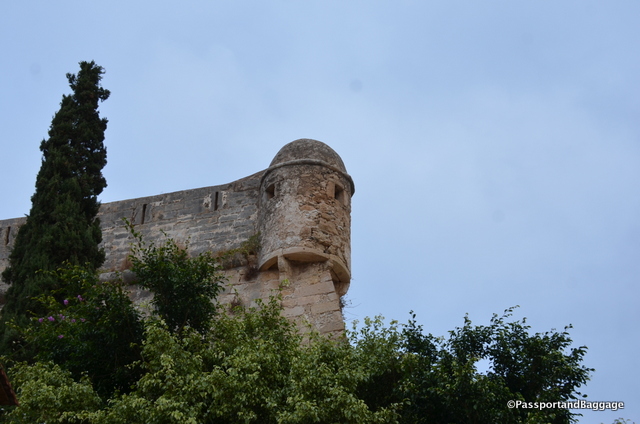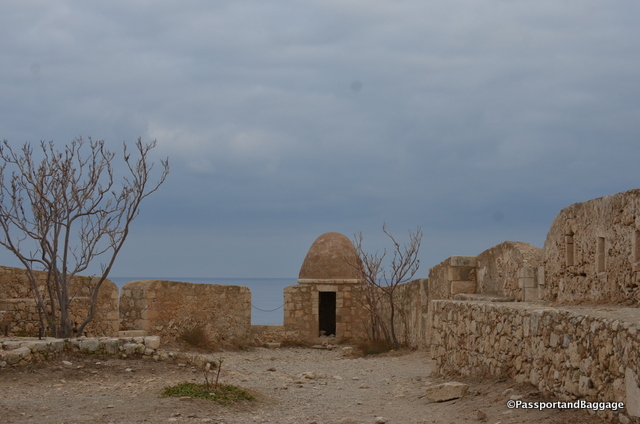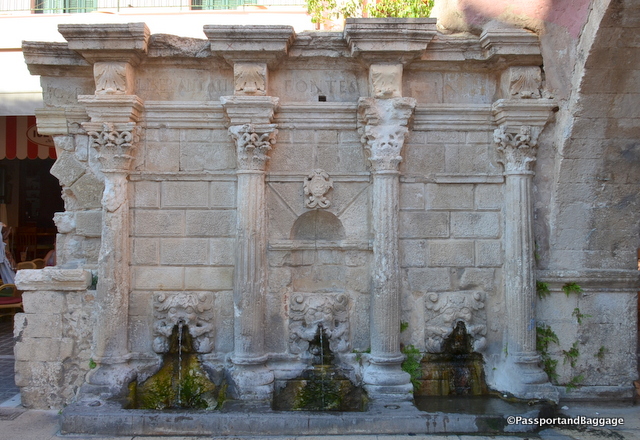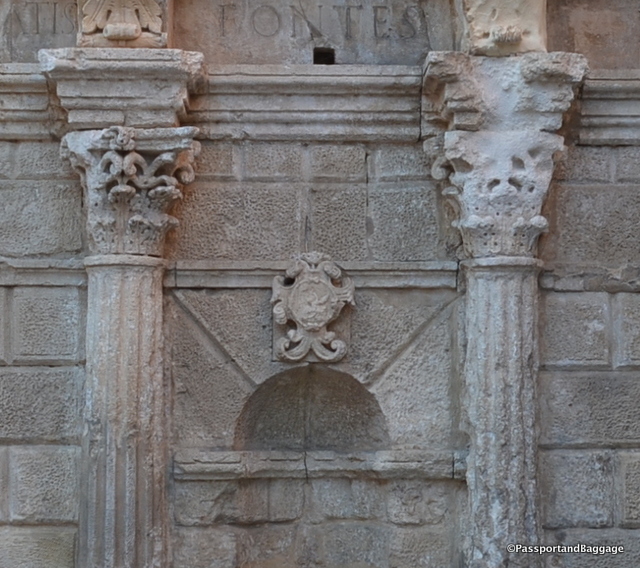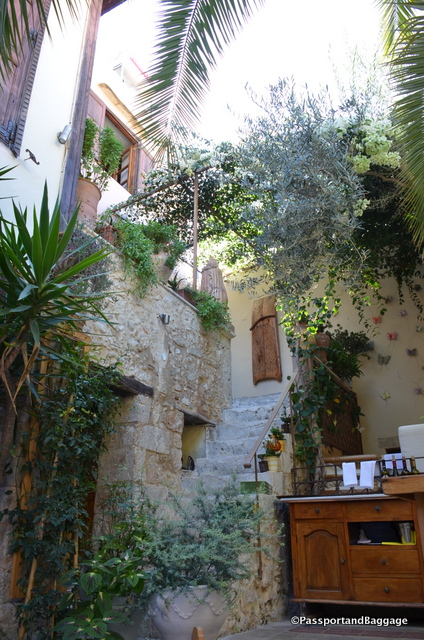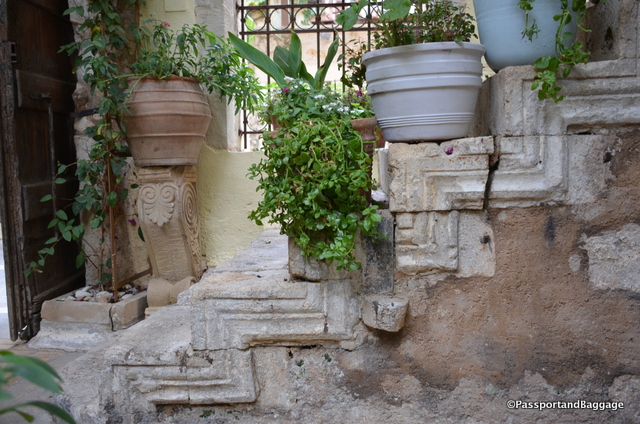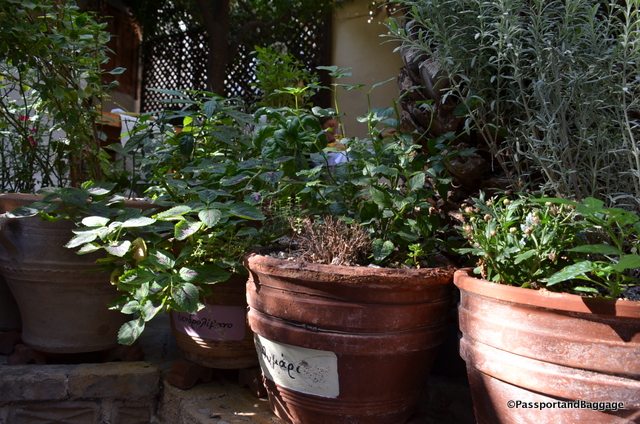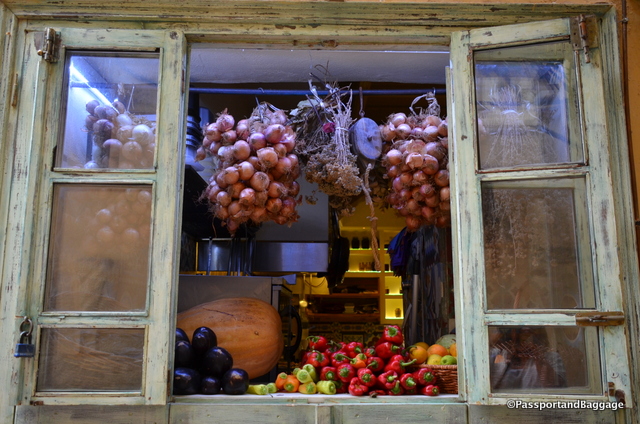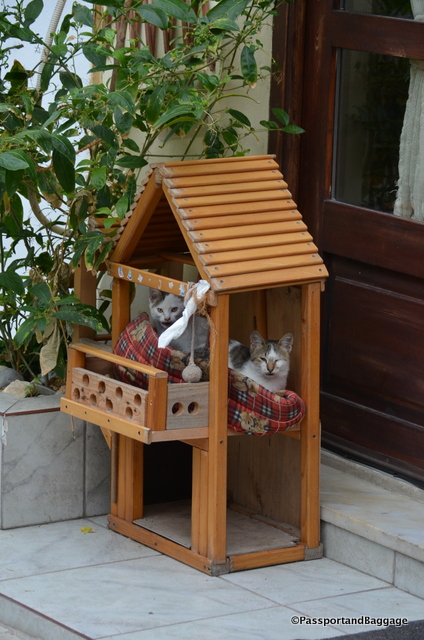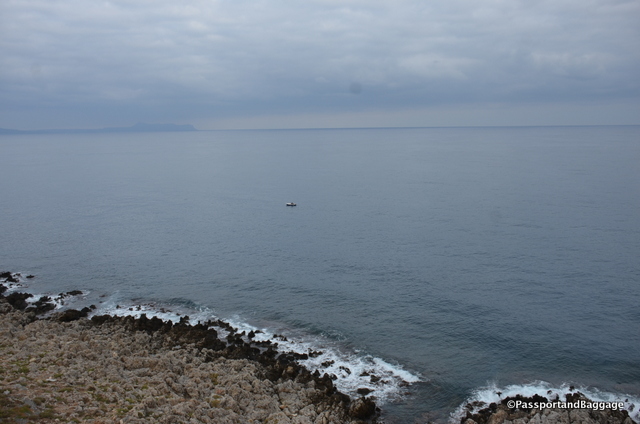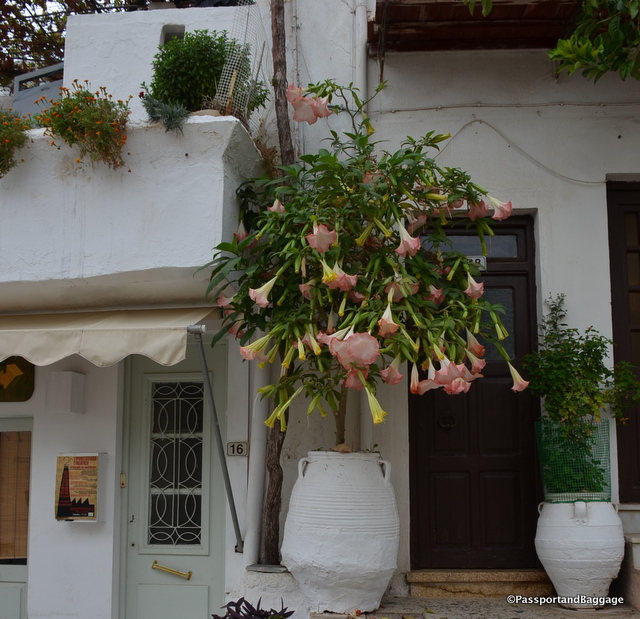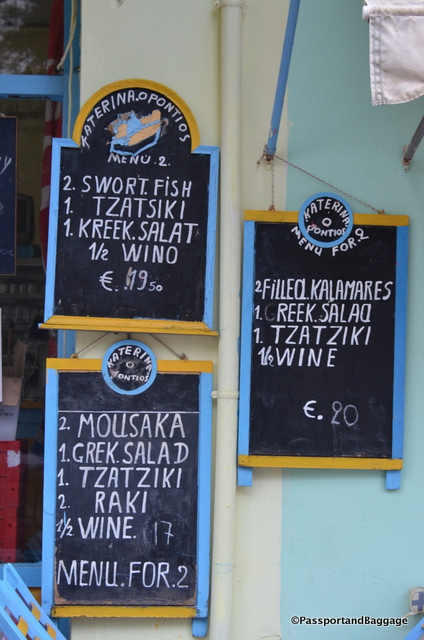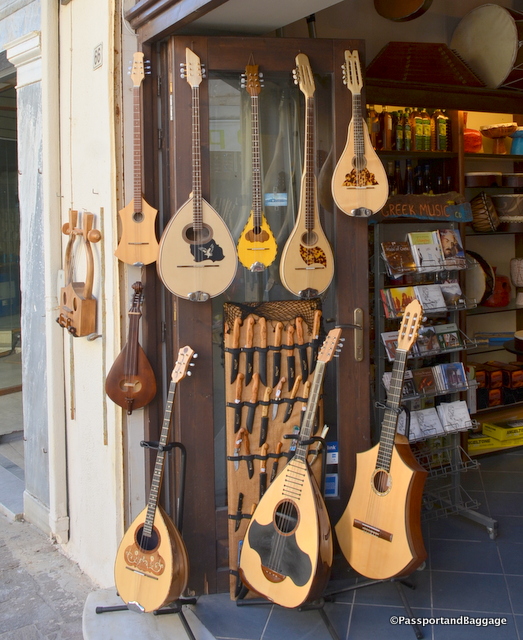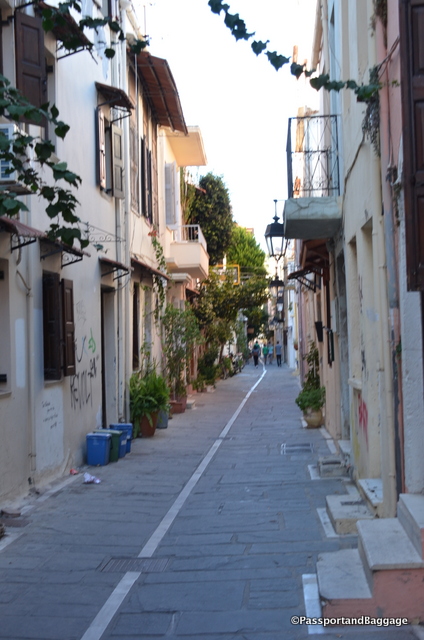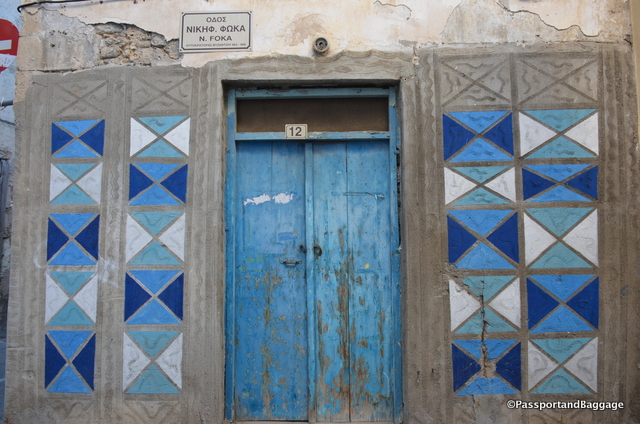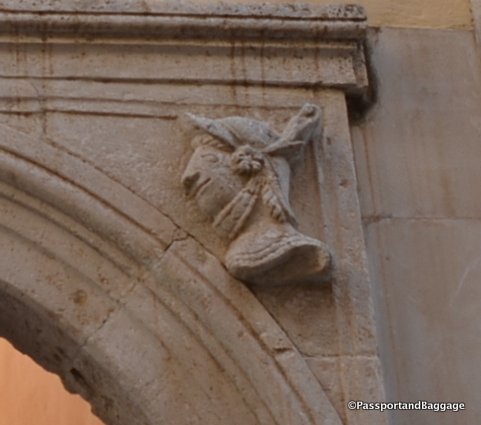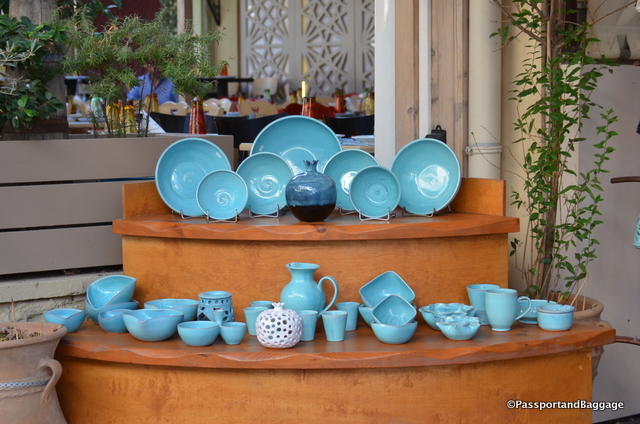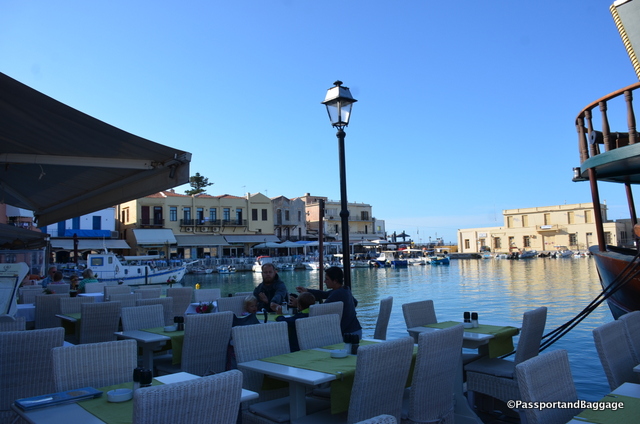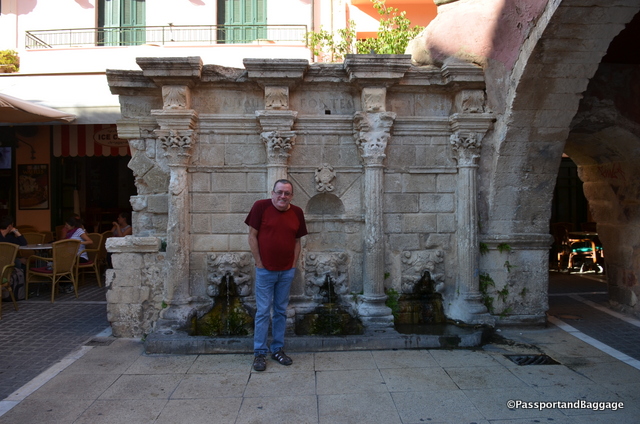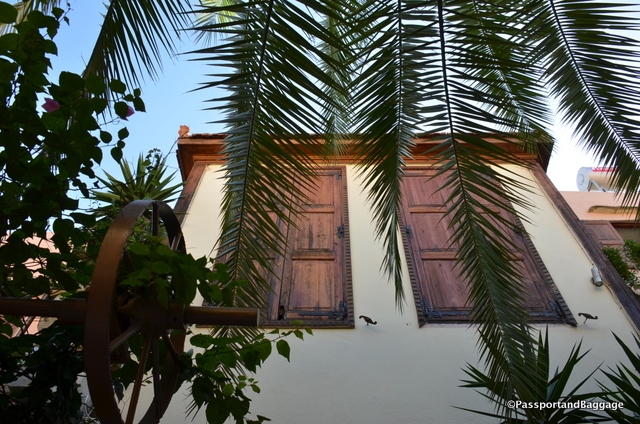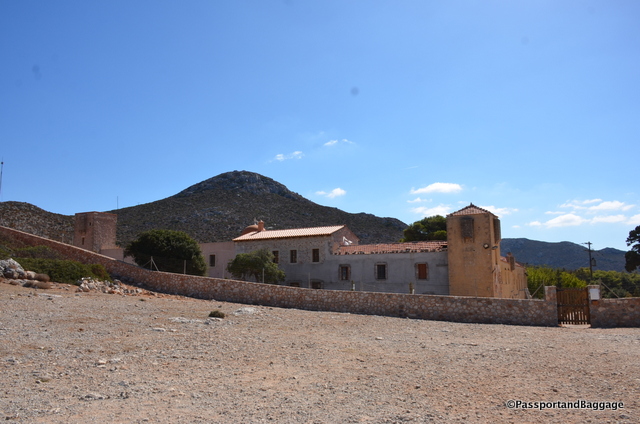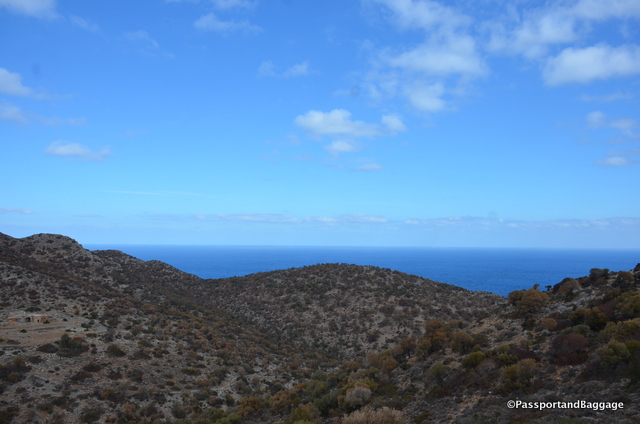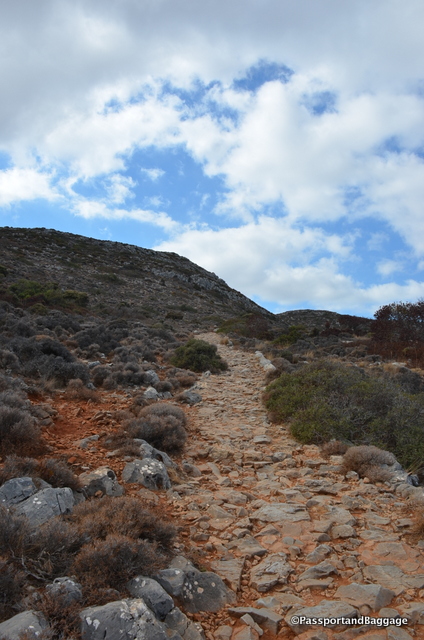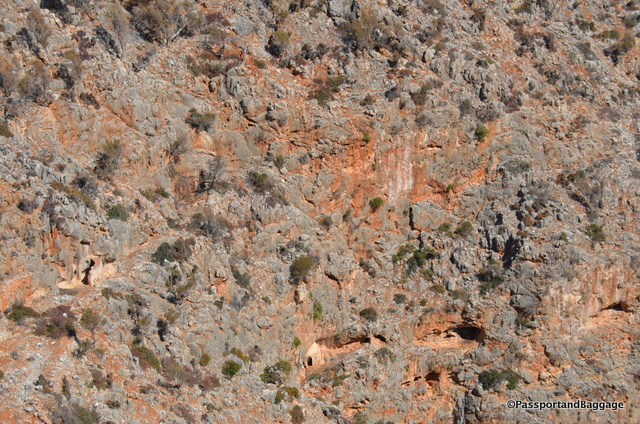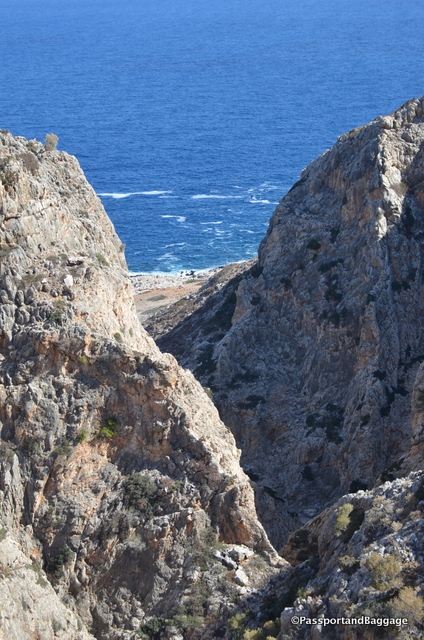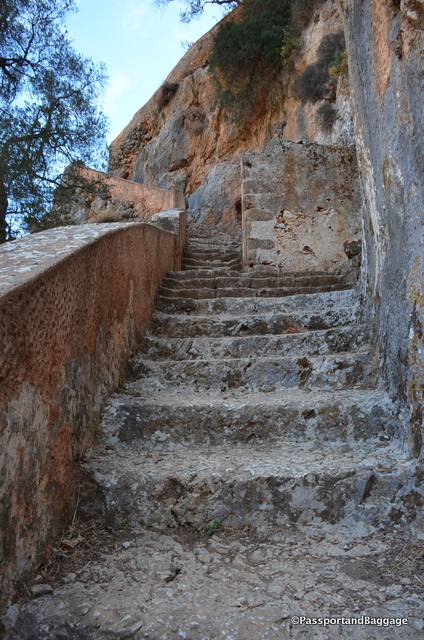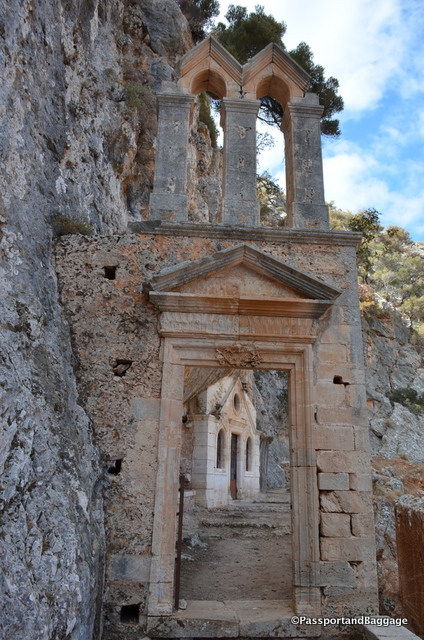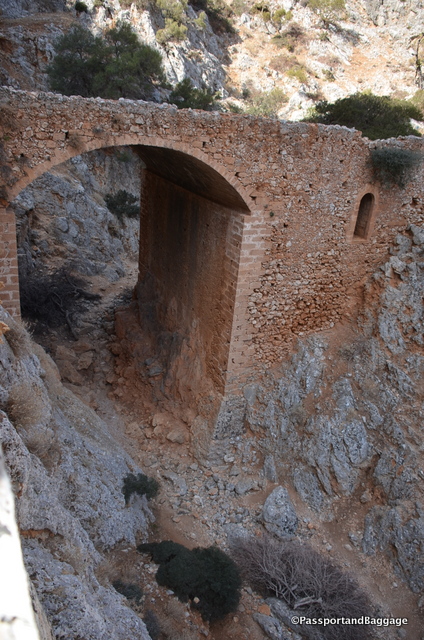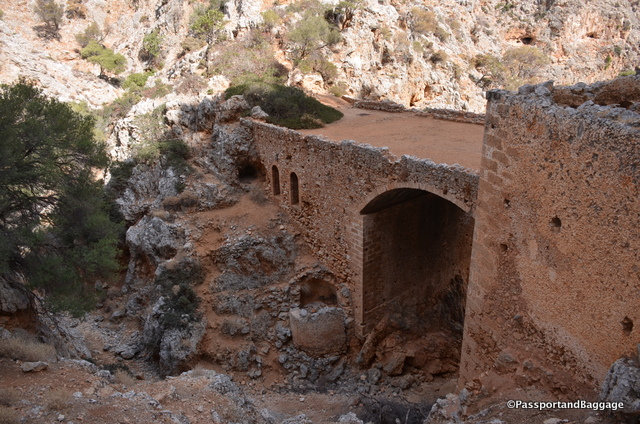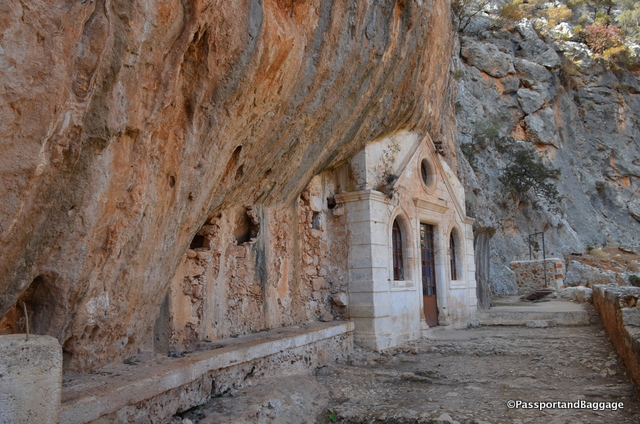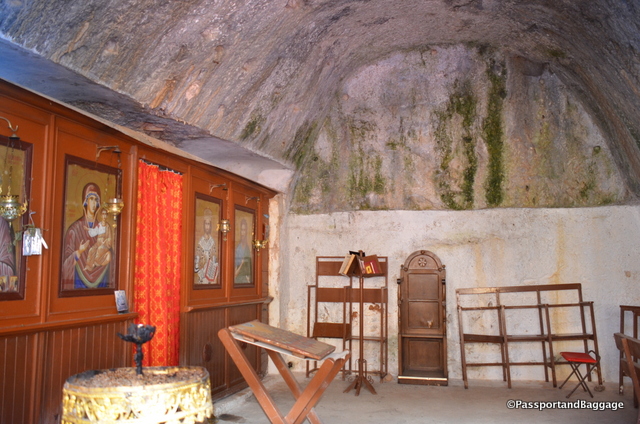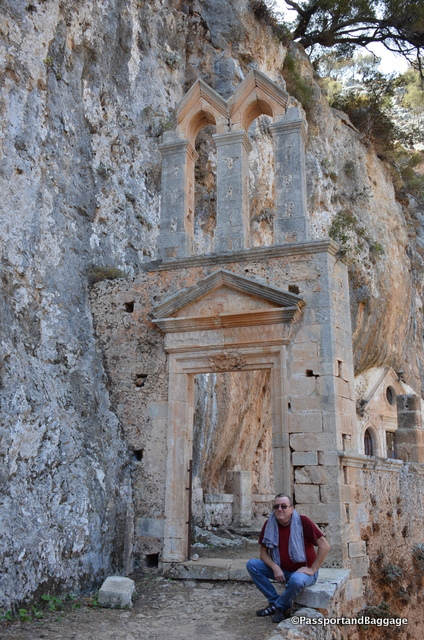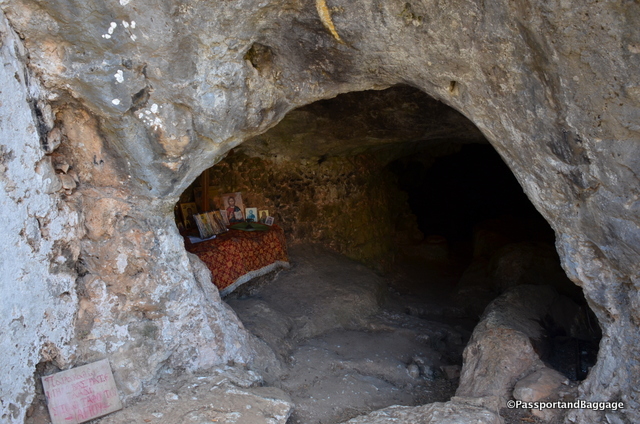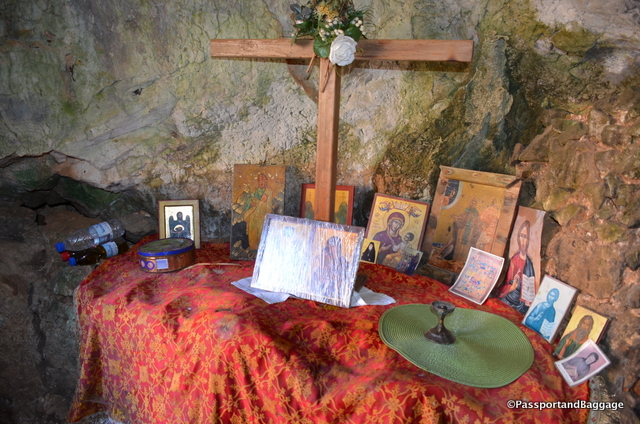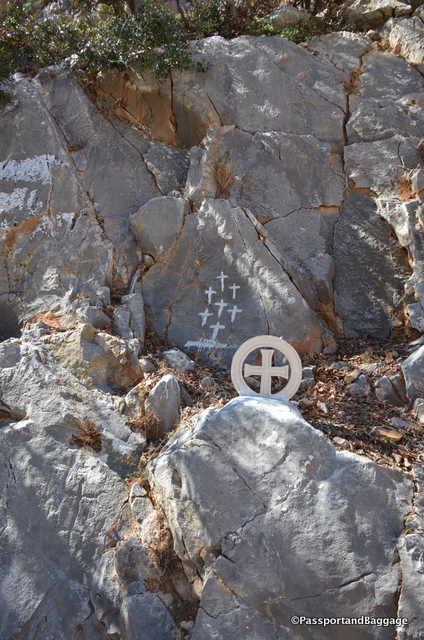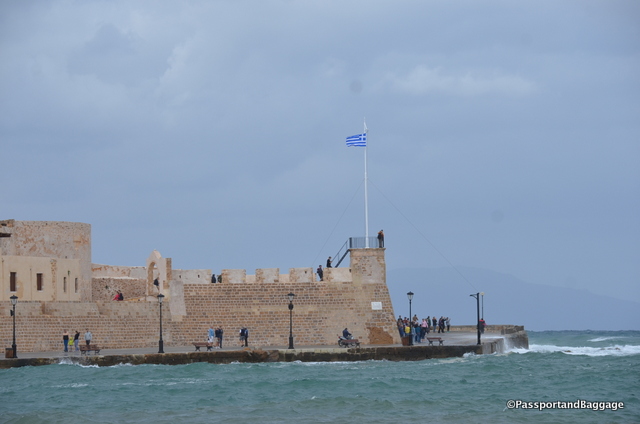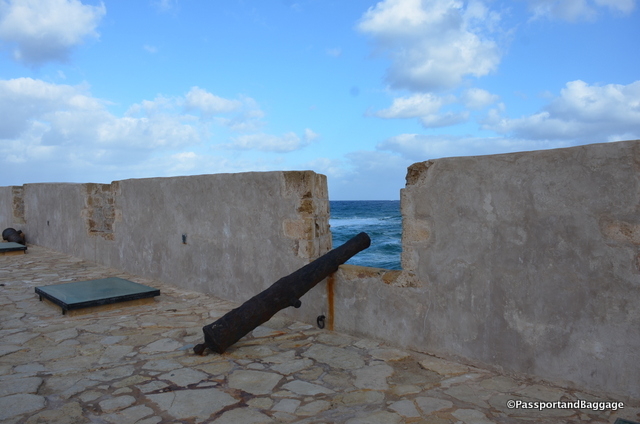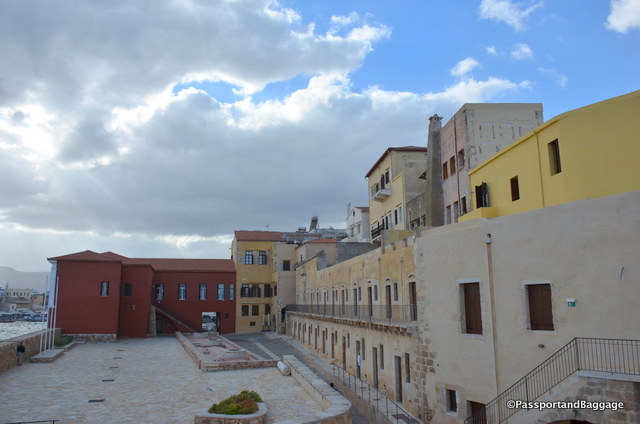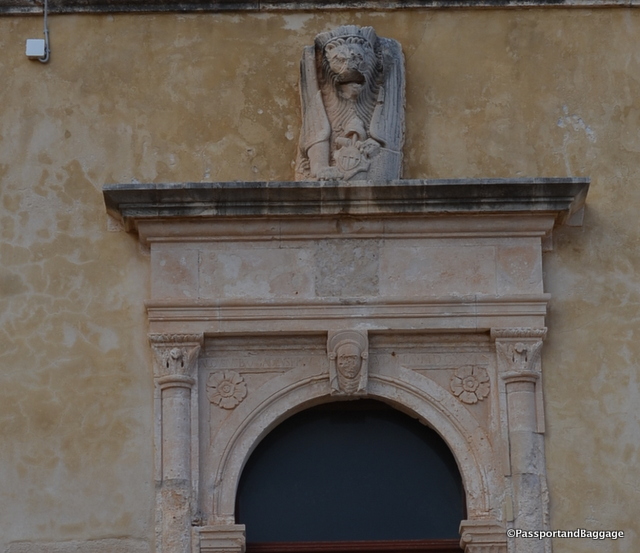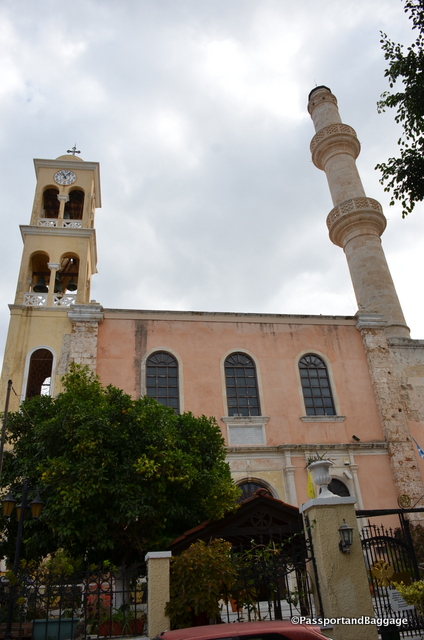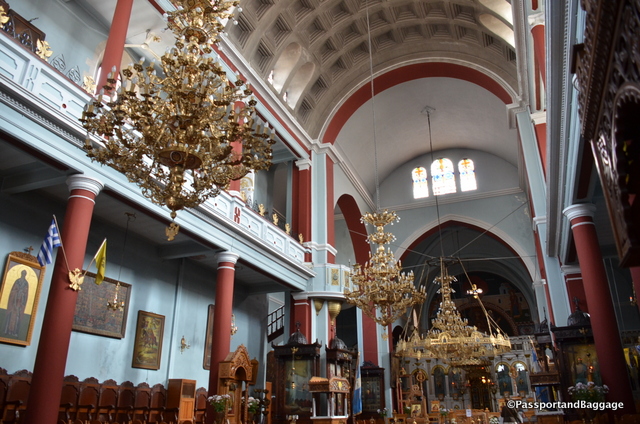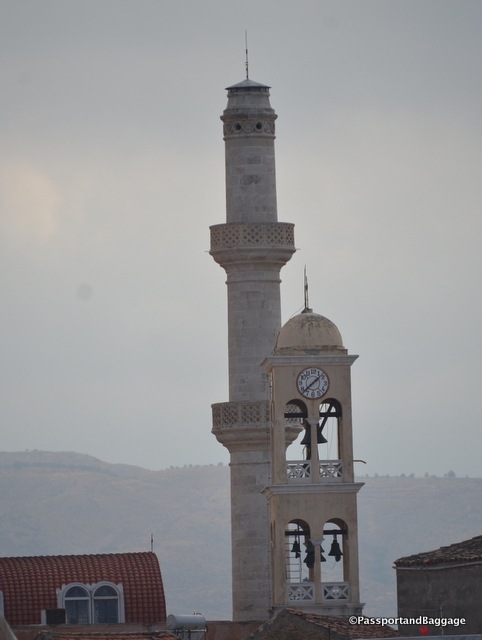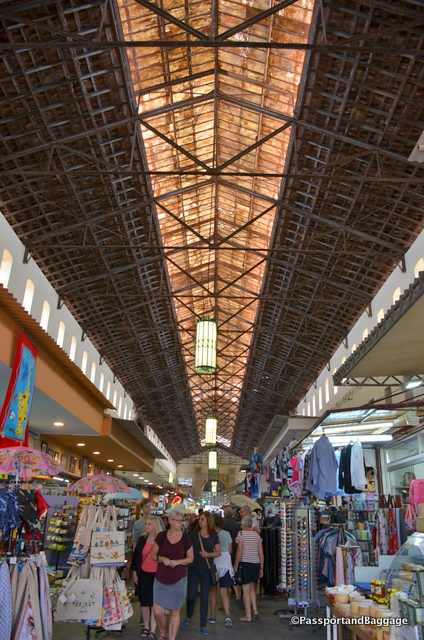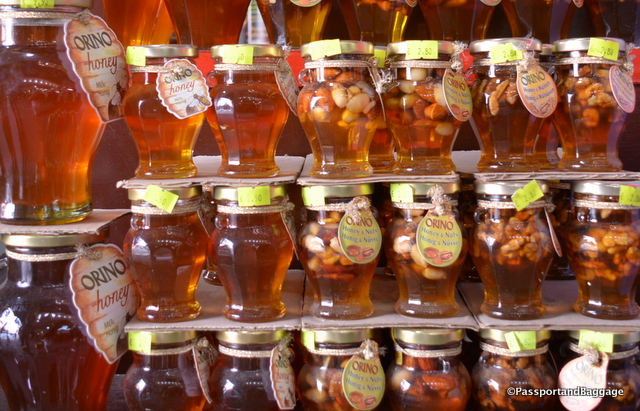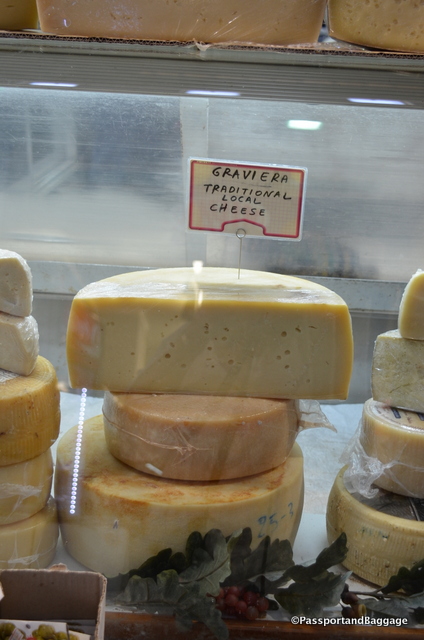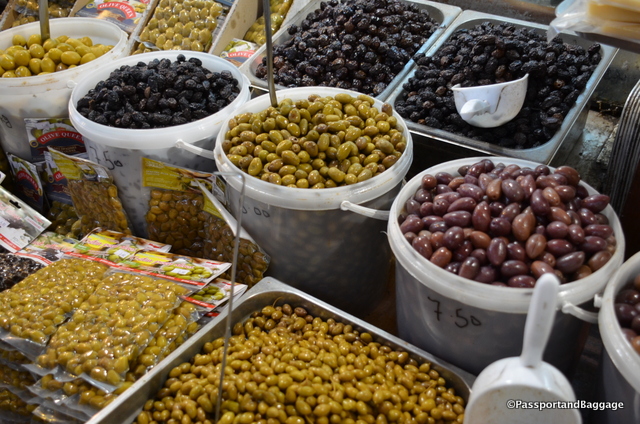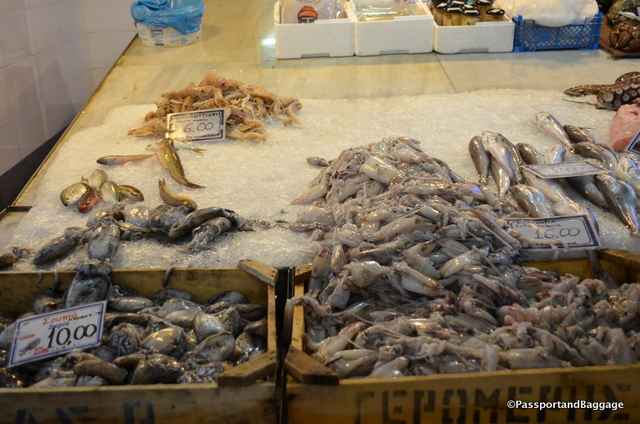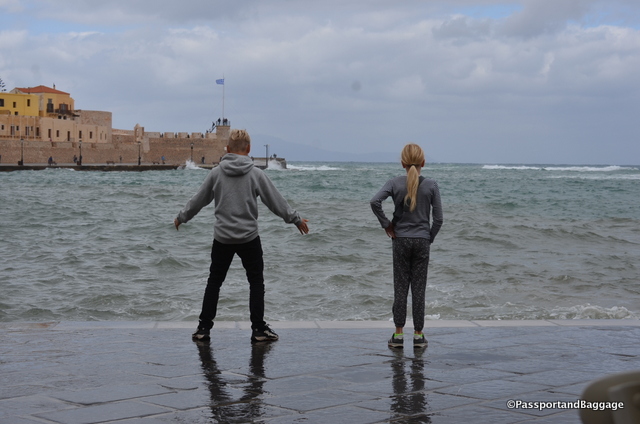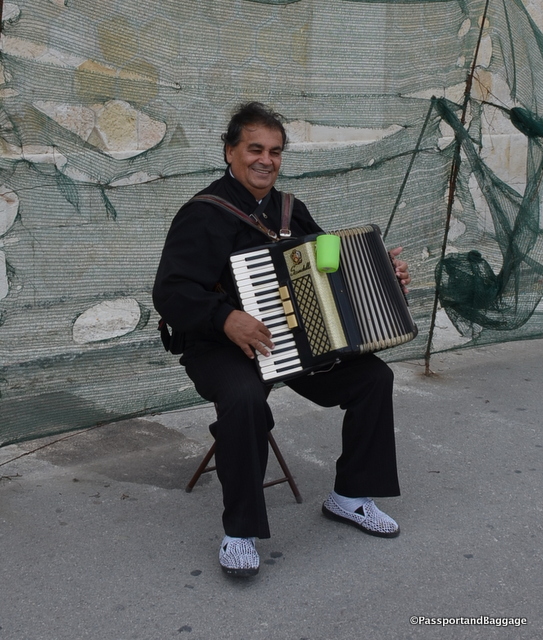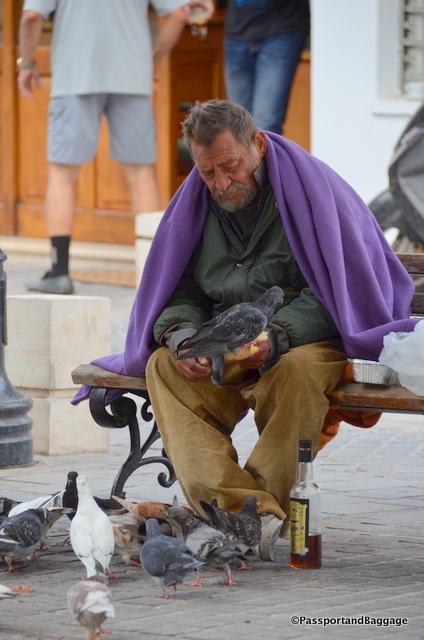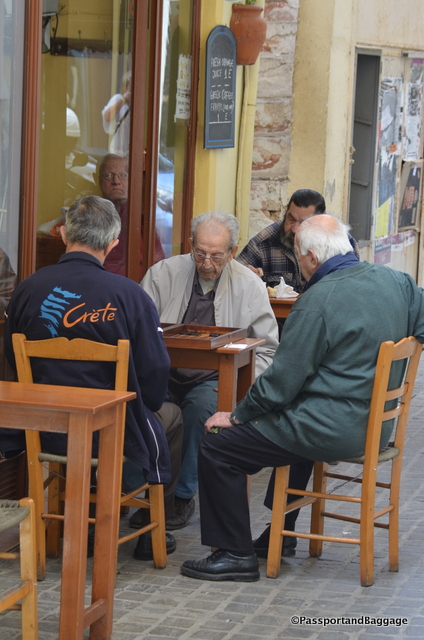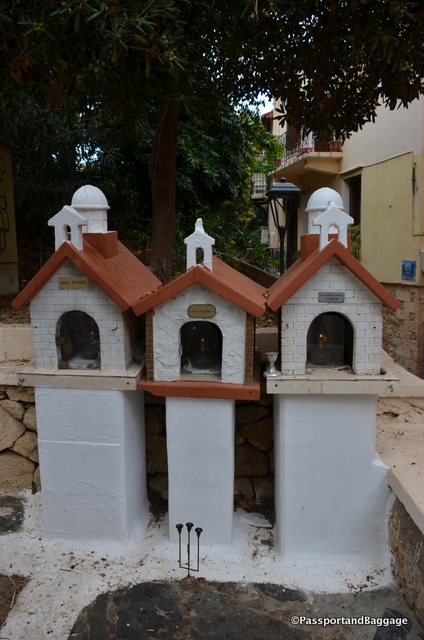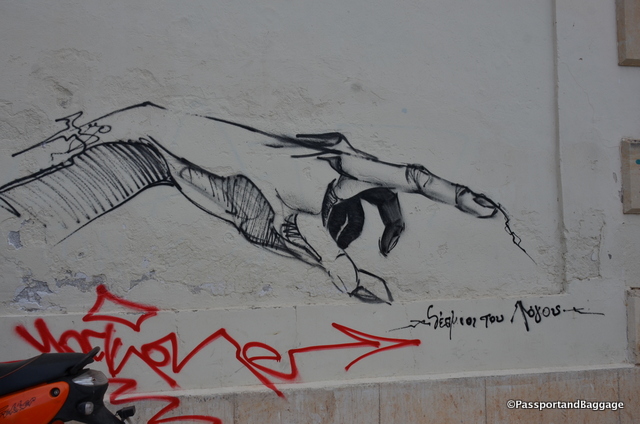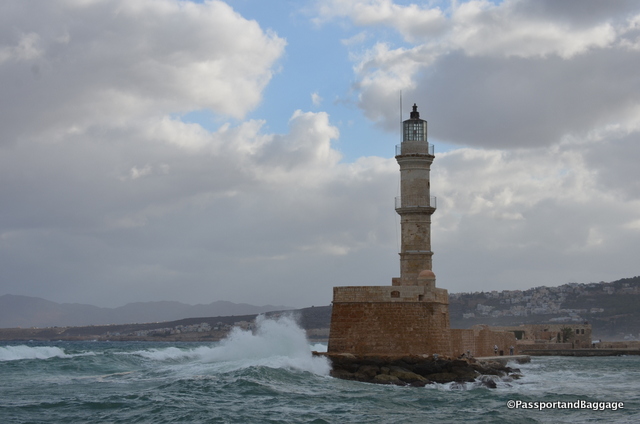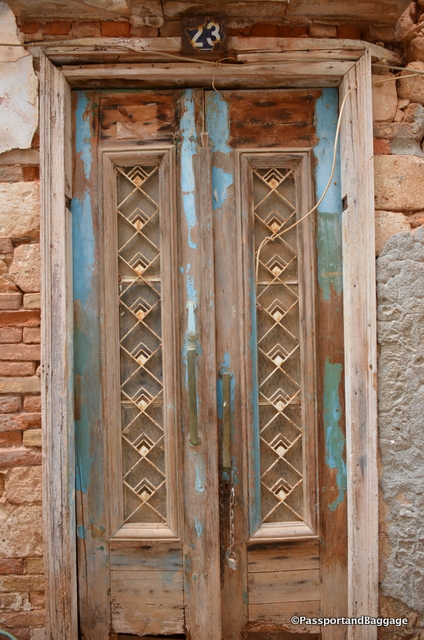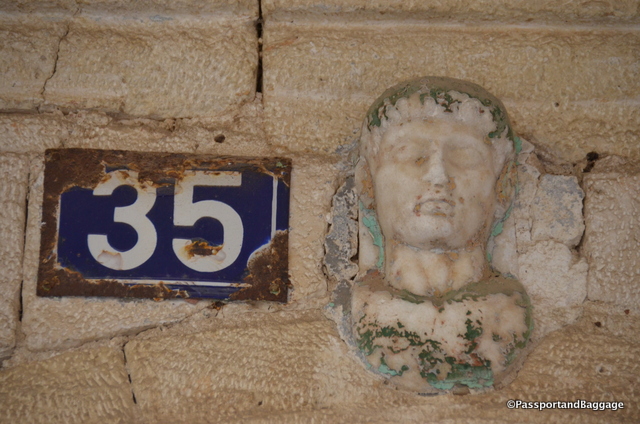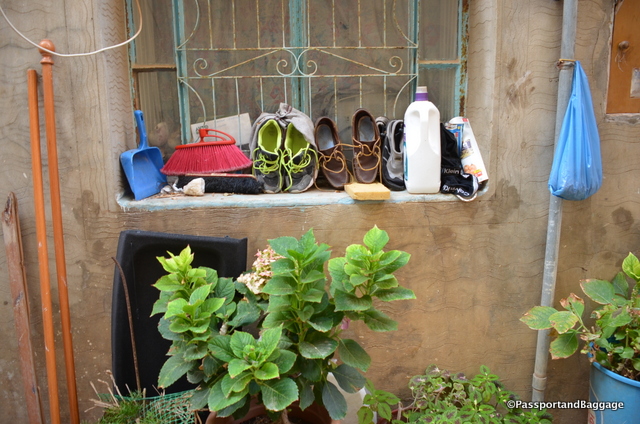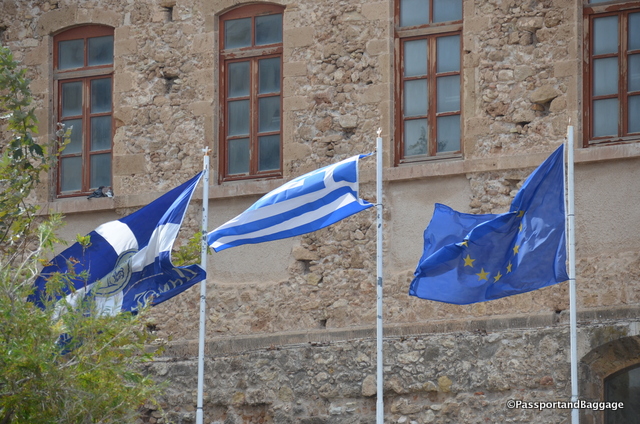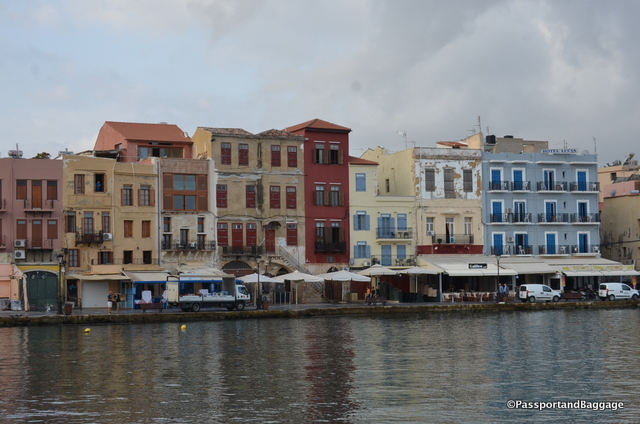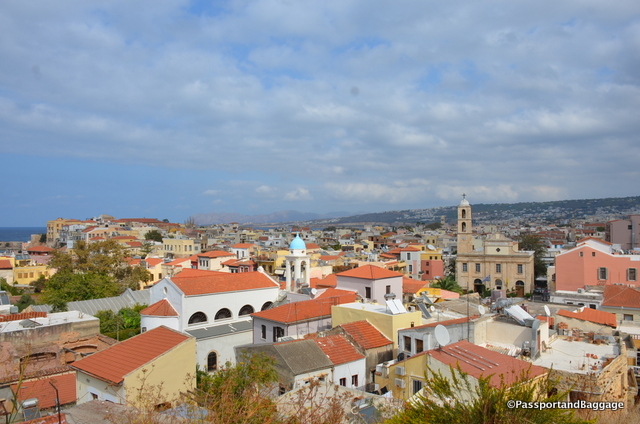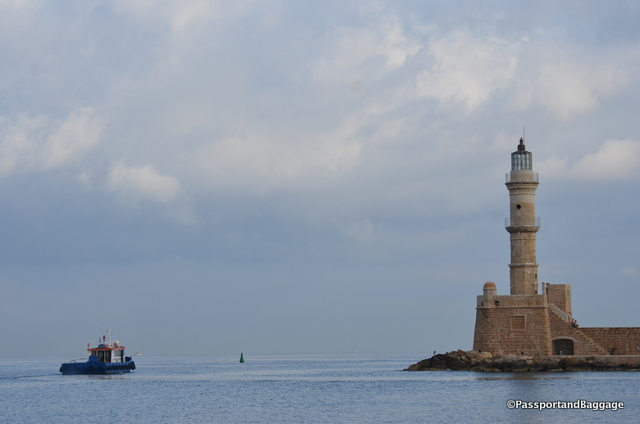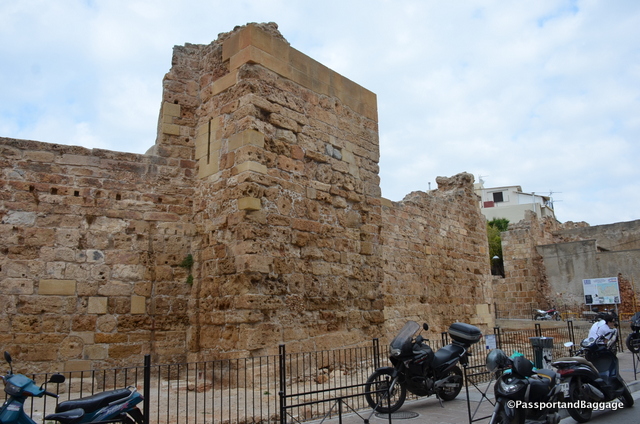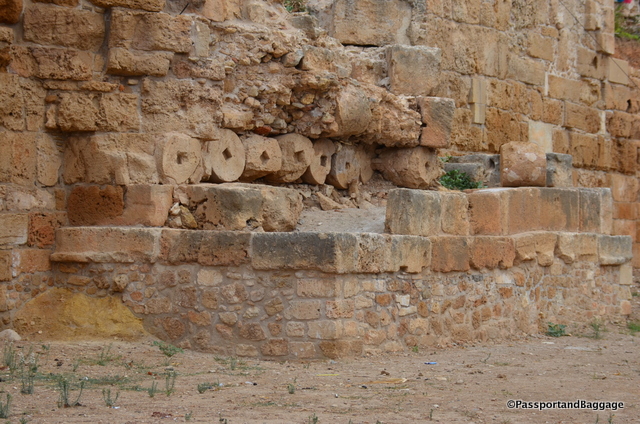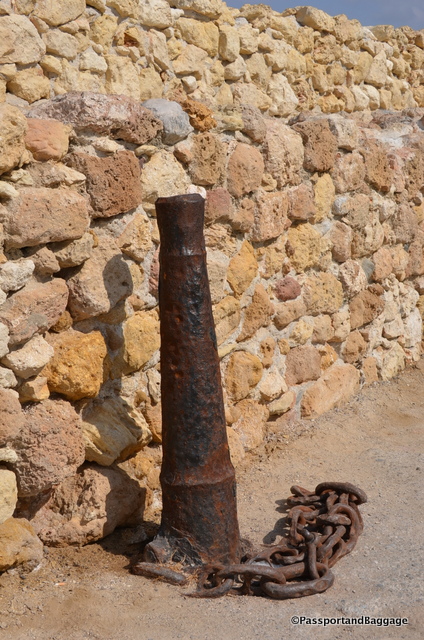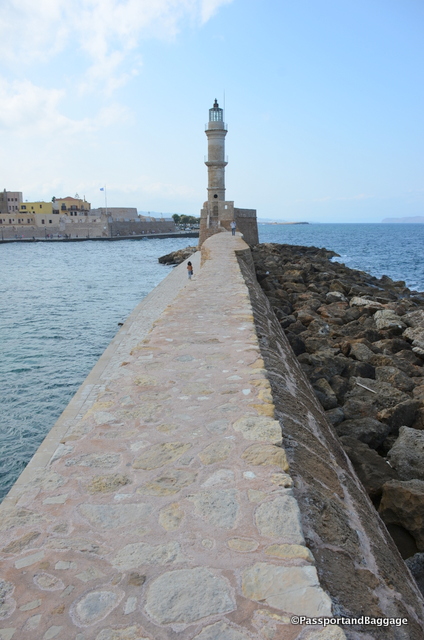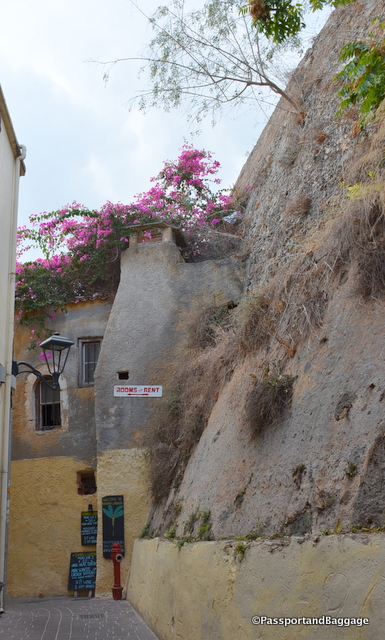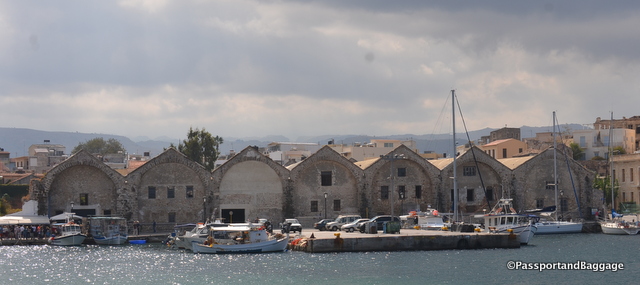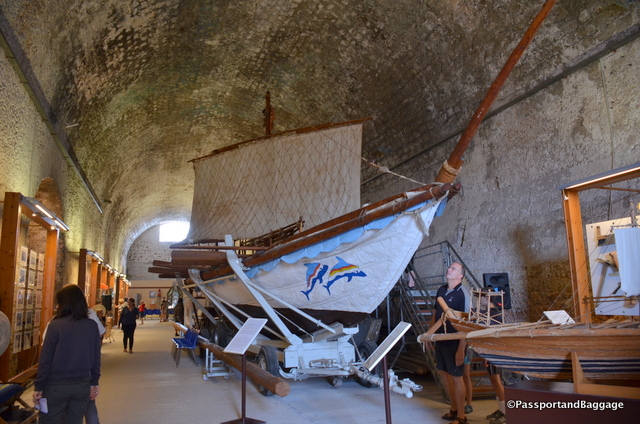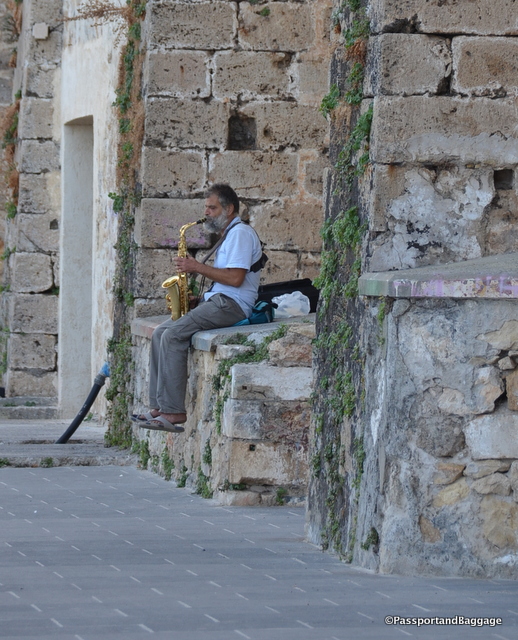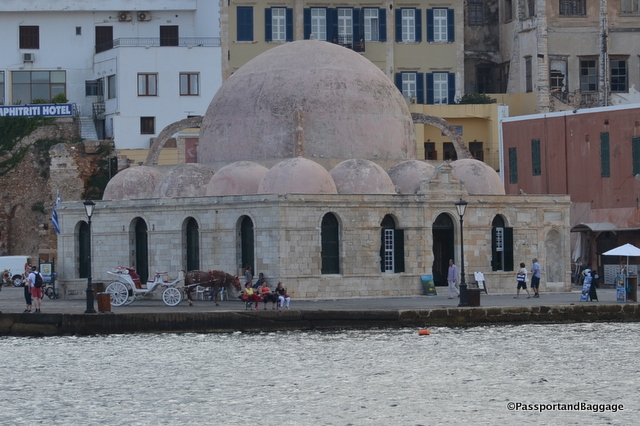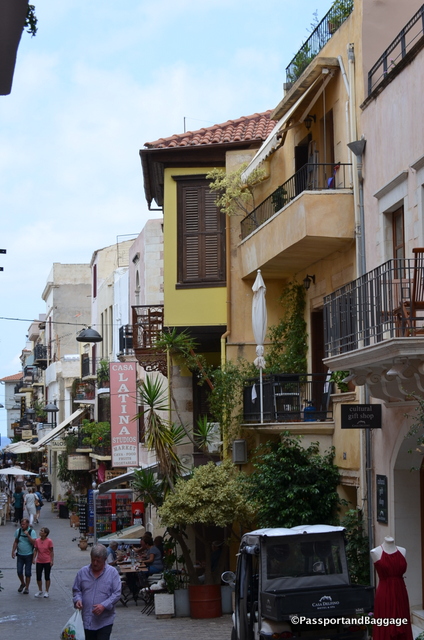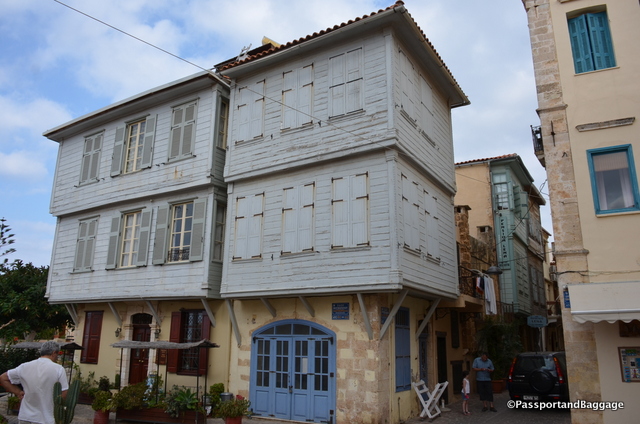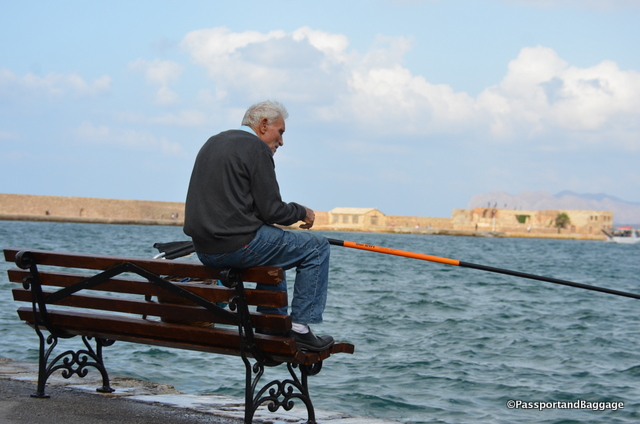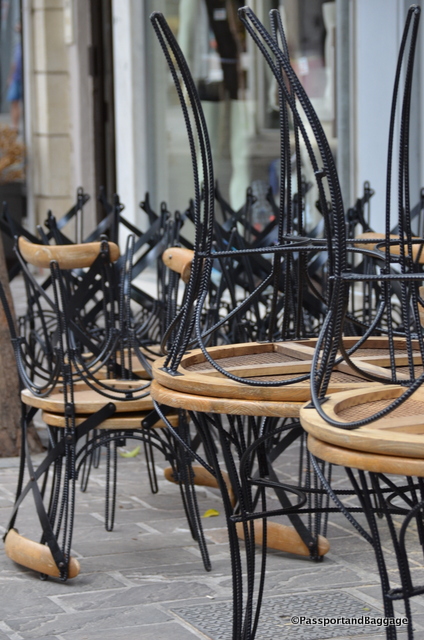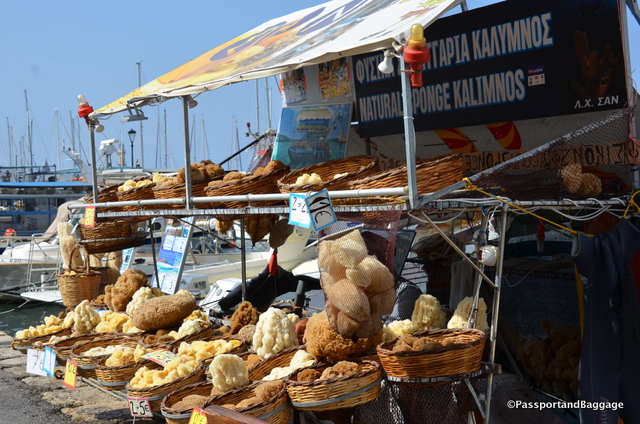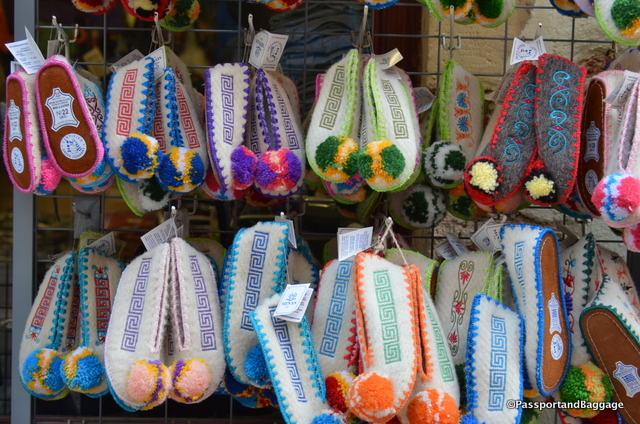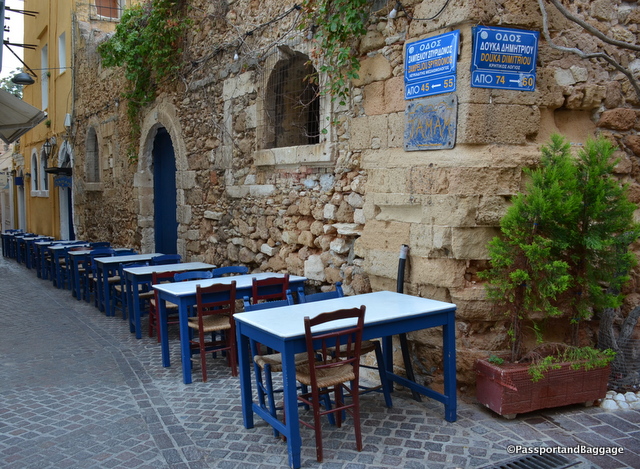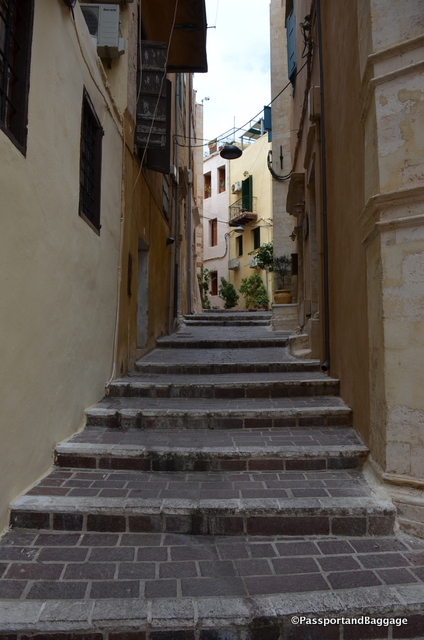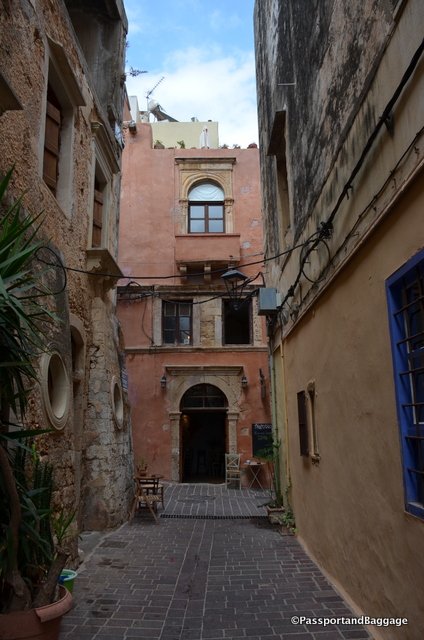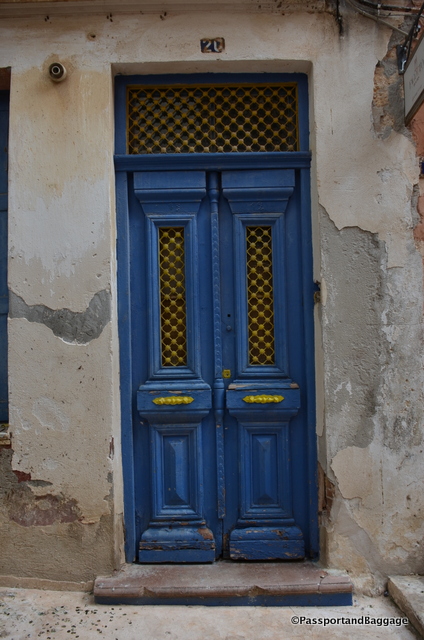October 23, 2016
You come to Heraklion to visit Knossos, but it is a city worth exploring as well. It is the largest city and the administrative capital of Crete also the fourth largest city in Greece.
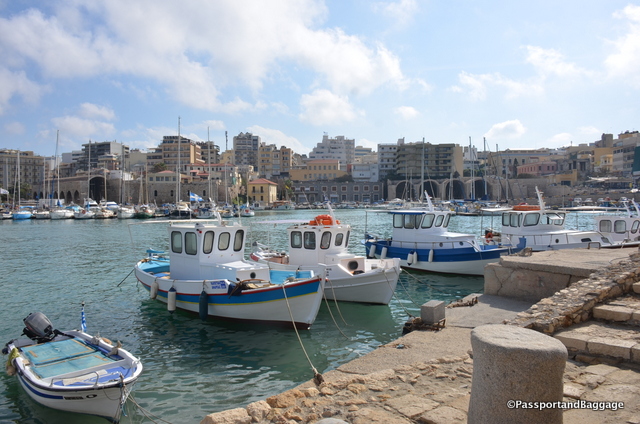 On the 23rd of May 1941, German bombers dropped bombs over the city on anything standing. At the end of the bombardment, a third of the city lay in ruins. Because of this the city is not very attractive, its postwar reconstruction resulted in a hodge-podge of urban planning.
On the 23rd of May 1941, German bombers dropped bombs over the city on anything standing. At the end of the bombardment, a third of the city lay in ruins. Because of this the city is not very attractive, its postwar reconstruction resulted in a hodge-podge of urban planning.
It does however, still have a small historical center.
In the center of this historical area is the Morosini fountain in Lions Square, or more accurately Eleftherious Venizelou Square, named after the late Prime Minister of Greece who played a leading role in unifying Crete with Greece.
In the 9th and 10th century under Arab rule, the square was the largest slave market in the Eastern Mediterranean.
The fountain was the work of Francesco Morosini and engineers Zorzi Corner, Raffaello Monnani and Francesco Basilicata, and was constructed to bring drinking water to Heraklion. It is the termination point of a nine-mile aqueduct that took fourteen months to complete in 1628.
The base of the fountain is composed of eight basins, making it easier for many people to fill their water-jars simultaneously. About five people could dip their jars in the fountain at each basin.
The basins are decorated with scenes from Greek mythology. At the center of each is a coat of arms of the Doge, the Duke, the Councilors and Morosini.
The lions spewing water are the symbol of the Venetians. There was originally, a marble statue of Posiedon sitting atop the lions, lost sometime in history.
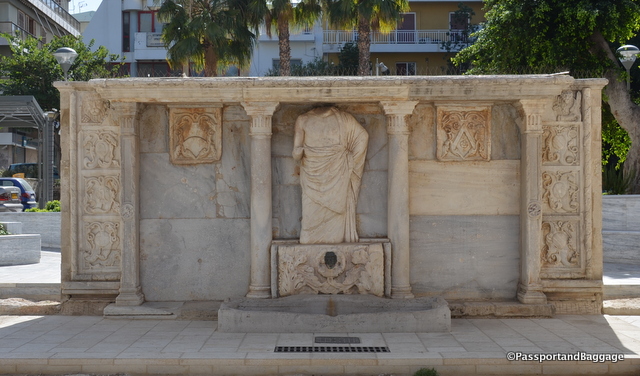 Another odd fountain in the area is the Bembo Fountain. It was built in 1552-54 by the Venetian Governor of Heraklion, Gianmatteo Bembo.
Another odd fountain in the area is the Bembo Fountain. It was built in 1552-54 by the Venetian Governor of Heraklion, Gianmatteo Bembo.
Apparently the statue, taken from the ancient town Ierapytna in Southeast Crete, is of a Roman official, and has always been headless. There was at one time a marble basin for collecting water, which they think may have been a Roman sarcophagus. The monument is decorated with family coats of arms of the Duke Gritti and Tiepolo, Emo and Marino.
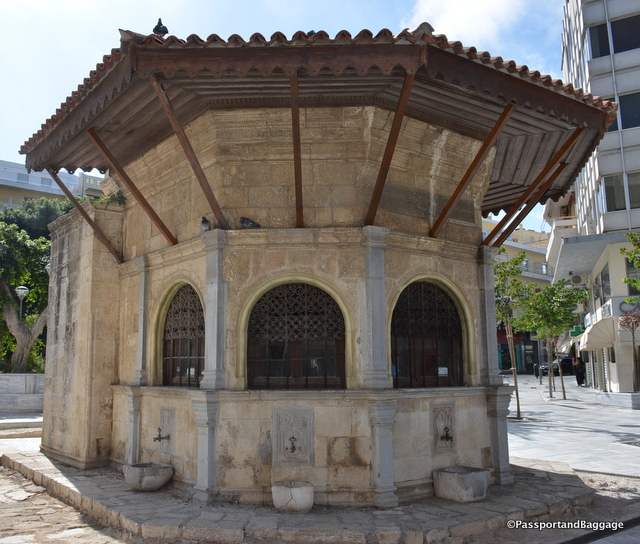
Next to the Bembo Fountain is this Turkish Sebil, built by Haci Ibrahim Agha. A sebil was a public fountain in the street, constructed by an eminent Turk, where passers-by could quench their thirst and bless the builder.
Did you know that El Greco was born in Heraklion? At that time Crete was part of the Republic of Venice, and the center of Post-Byzantine art. There is a park with a bust of him in the center of town. However, there is only one of his paintings on the entire island. The Landscape of the Gods-Trodden Mount Sinai, in the Historical Museum of Heraklion.
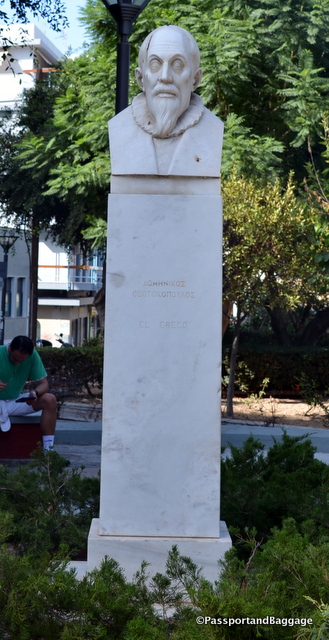 There are three churches that stand together near Vikela and Agiou Mina Streets.
There are three churches that stand together near Vikela and Agiou Mina Streets.
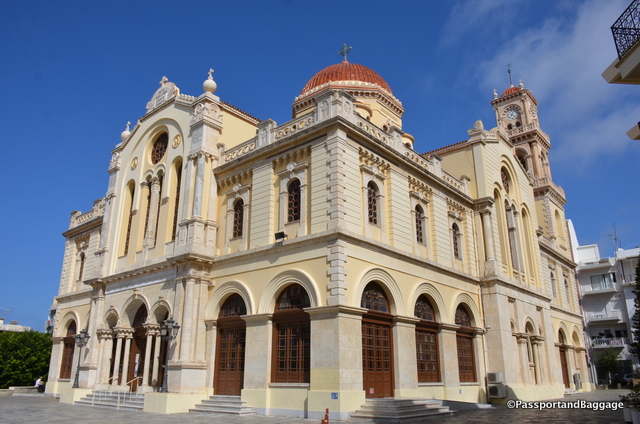 The largest is the Cathedral of Saint Minas, begun in 1862 and finished in 1895, honoring the patron saint of Heraklion. On the north side of the church (outside) you will see a bomb dropped next to the church during the bombing of Heraklion by the Germans in 1941. The bomb never exploded and it was considered a miracle.
The largest is the Cathedral of Saint Minas, begun in 1862 and finished in 1895, honoring the patron saint of Heraklion. On the north side of the church (outside) you will see a bomb dropped next to the church during the bombing of Heraklion by the Germans in 1941. The bomb never exploded and it was considered a miracle.
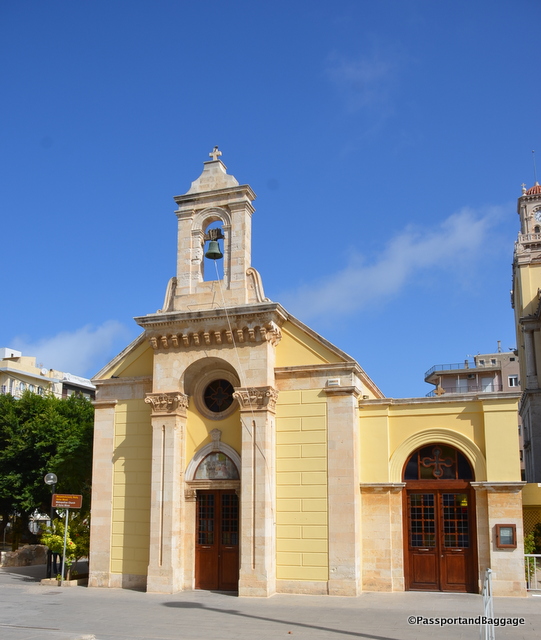 Just to the left at the front the Cathedral of Saint Minas is Archiepiscopate of Crete, the original church of Saint Minas, called little Saint Minas and built in 1735.
Just to the left at the front the Cathedral of Saint Minas is Archiepiscopate of Crete, the original church of Saint Minas, called little Saint Minas and built in 1735.
 Next to Saint Minas is the church of Agia Ekaterini (St Catherine of Sinai) now the Museum of Christian Art. The museum is worth a visit. It holds icons of two important schools from the 15th and 16th century. It also has small exhibits of woodwork, sculpture and devotional objects.
Next to Saint Minas is the church of Agia Ekaterini (St Catherine of Sinai) now the Museum of Christian Art. The museum is worth a visit. It holds icons of two important schools from the 15th and 16th century. It also has small exhibits of woodwork, sculpture and devotional objects.
These three churches sit on Saint Catherine Square. It was Sunday and Saint Catherine Square was filled with families drinking coffee and letting their children play.
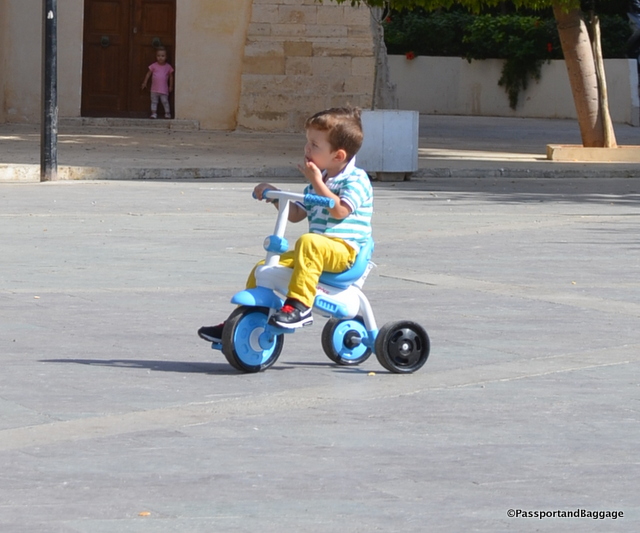 *
*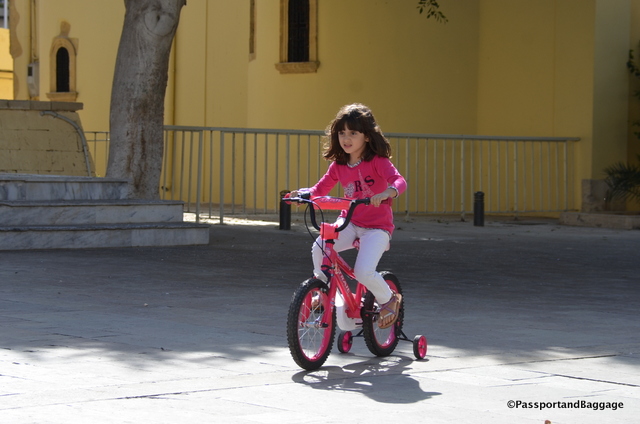 Interestingly the given name Minas is rare in Heraklion, despite being the town’s patron saint. During the time of Turkish rule, “illegitimate” children were often left on the steps of the church of Saint Minas. The church took care of the children and named the boys Minas. Since being named Minas showed that the child was “illegitimate”, people did not give the name to their children.
Interestingly the given name Minas is rare in Heraklion, despite being the town’s patron saint. During the time of Turkish rule, “illegitimate” children were often left on the steps of the church of Saint Minas. The church took care of the children and named the boys Minas. Since being named Minas showed that the child was “illegitimate”, people did not give the name to their children.
Walking a little ways from Saint Catherine’s Square you find The Loggia, or noblemen’s club, also built by Francesco Morosini, in 1626.
It was part of the Venetian political and social custom to construct a public building as a meeting-place for nobles, rulers and feudal lords, where economic and commercial decisions were made. The building was where decrees of state were proclaimed and the Duke watched parades.
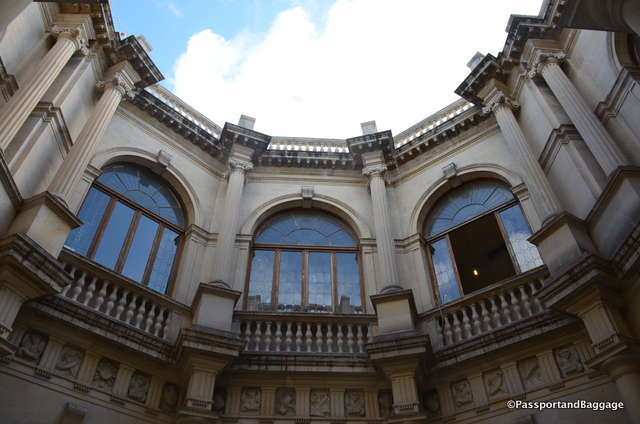 The Loggia is a combination of two different architectural styles: Doric style on the ground floor and Ionic on the upper floor. The building is a faithful reproduction of Palladio’s famous Basilica in Vicenza, demonstrating the significance the Venetians attached to the city of Heraklion.
The Loggia is a combination of two different architectural styles: Doric style on the ground floor and Ionic on the upper floor. The building is a faithful reproduction of Palladio’s famous Basilica in Vicenza, demonstrating the significance the Venetians attached to the city of Heraklion.
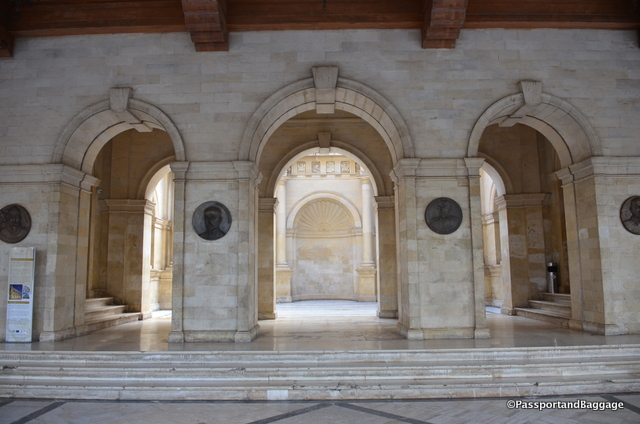 The Loggia was fully restored in 1987.
The Loggia was fully restored in 1987.
Saint Titus was a disciple of the Apostle Paul and the first Bishop of Crete. The first church dedicated to him was in the old capital Górtyn.
The skull of St Titus, the icon of the Virgin Mesopanditissa and other relics from Górtyn were moved to the new church.
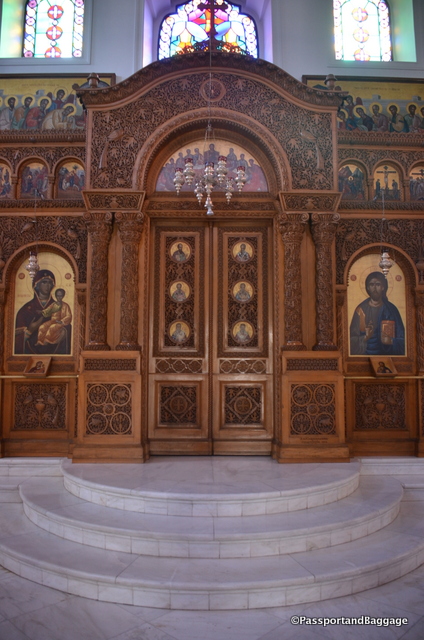 When Heraklion fell to the Turks the relics were taken to Venice, where they remain today.
When Heraklion fell to the Turks the relics were taken to Venice, where they remain today.
The skull, however, was returned to Heraklion in 1966 and is now kept in a silver reliquary in the church.
The great earthquake of 1856 totally destroyed the church. Architect Athanasios Moussis, who also designed the Orthodox cathedral of Saint Minas, rebuilt it as you see it today, originally, as an Ottoman mosque.
The minaret was demolished in the 1920s, when the last Muslims left Heraklion during the population exchange between Greece and Turkey.
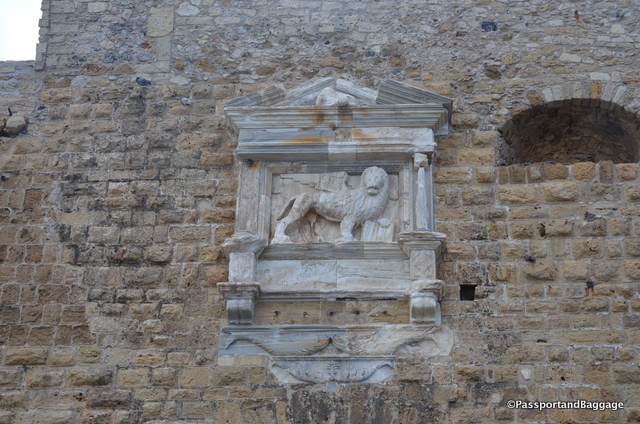 *
*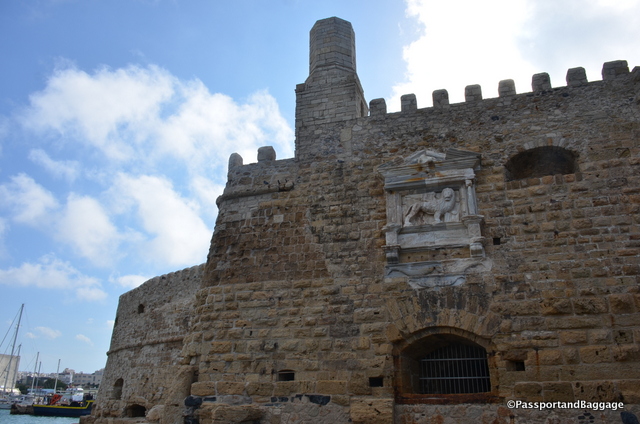 A walk along the water takes you to the Venetian fortress, known as Koules. Its history is actually unknown. The structure that is seen today was built in 1523 by the Venetians, over what is known to have been a previous structure. The Lions of Saint Mark decorate two ends of the fortress.
A walk along the water takes you to the Venetian fortress, known as Koules. Its history is actually unknown. The structure that is seen today was built in 1523 by the Venetians, over what is known to have been a previous structure. The Lions of Saint Mark decorate two ends of the fortress.
 Along the waterfront are the ruins of the monastery Basilica of the Church of Peter and Paul, built in the 13th century, during the Venetian period, it was one of the most important churches of Heraklion. The remains are actually from the second church, as the first was destroyed in an earthquake in 1508. The church is currently being restored.
Along the waterfront are the ruins of the monastery Basilica of the Church of Peter and Paul, built in the 13th century, during the Venetian period, it was one of the most important churches of Heraklion. The remains are actually from the second church, as the first was destroyed in an earthquake in 1508. The church is currently being restored.
When looking down into the church you begin to realize how much lower the old church is than the present streets, you notice it, as well, when you visit the Dermata Gate, part of the old Venetian wall, the gate is set in the middle of the sea wall and once opened to the Dermata Bay.
Walking through old Heraklion near the harbor you see a few old and beautiful buildings:
There are some funny signs, and interesting street art as well:
